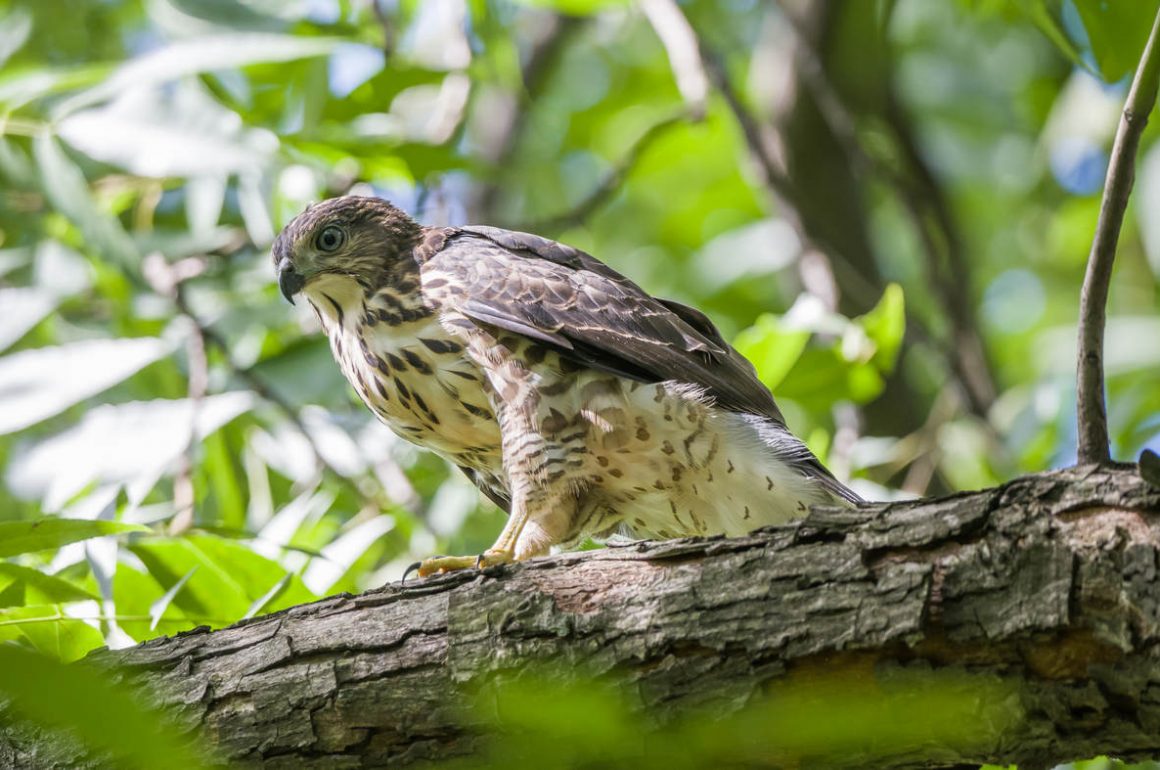
After returning once more from Nanhui and almost admiring the extent of ongoing destruction there, what better song to start this blog post than with excerpts from the song “Give up” by The Burning Hell? Unfortunately, I could not find a working link to a studio version of the song (only to some live versions which I am afraid to say do not quite do it for me), so instead, I will quote a bit more from the lyrics than I usually do, hoping that the band will not mind:
“So though I know in our culture it basically boils down to blasphemy
I’ve had it with the power of positive thinking and the tyranny of tenacity
I can’t live with this stick-to-it-iveness dependent on endless achievement
I’d rather relax and casually chant a mantra I really believe in:
I give up all of the time
I give up and I’m doing fine
Because I’ve got to be going when the going gets tough”
Knowing that Nanhui is getting worse and worse for birds, Crested Goshawks are successfully breeding in some of Shanghai’s city parks – not giving up, as it were (I guess they do not know about The Burning Hell). Shanghai parks are rather crowded and noisy places, but the goshawks – who unlike me have lived in China all their lives – apparently do not mind.
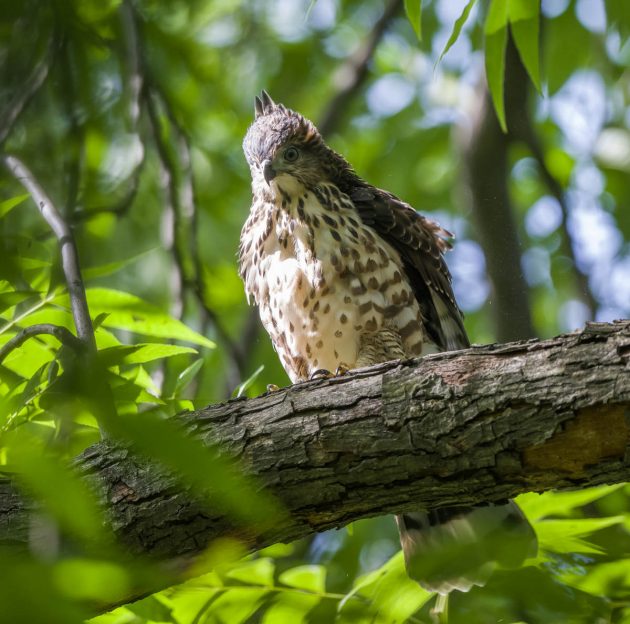
Actually, as I just found out, this is not really new information. A paper titled “Crested Goshawk Accipiter trivirgatus may adapt well to life in urban areas across its range in Asia” already made the same observation in 2018.
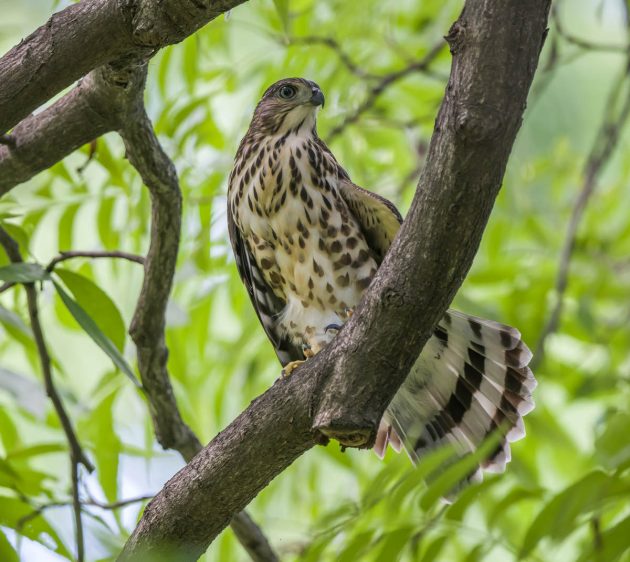
Another paper on Taiwanese birds found that “the urban Crested Goshawk bred 34 days earlier on average than the rural population with significantly higher nesting success”, concluding that “the urban Crested Goshawk population benefits from high food supply and low predation risk.” Indeed, the main health risk in these Chinese parks probably comes from badly played saxophones.
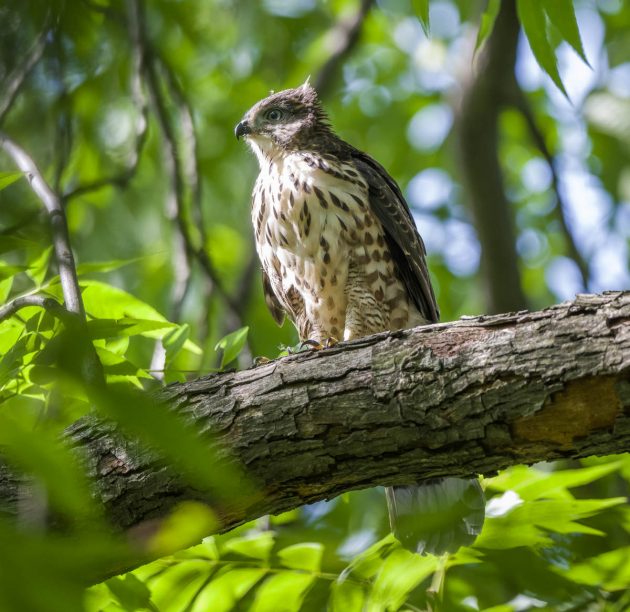
The juvenile seems to wear some kind of hooped socks – the type that looks cute-ish on little girls but rather embarrassing on older women. Fortunately, the juvenile goshawk is indeed young enough to pull it off.
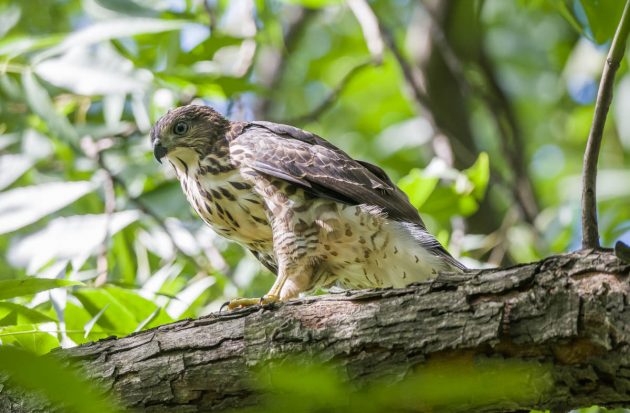
When not watched by people thinking of the chick as cute, it eats birds though. Something a proper cartoon character probably would not do.
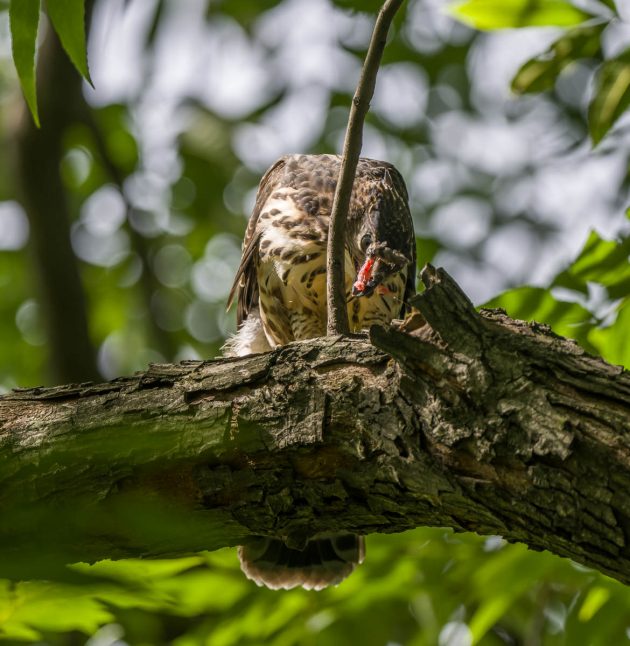
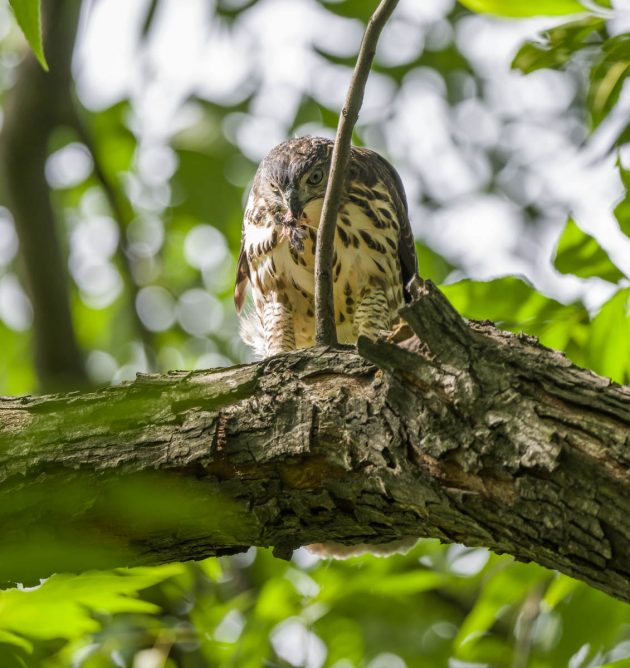
Below are rather a few too many photos of Pheasant-tailed Jacana. I usually pretend I do not like bird-in-flight photos that much, but probably that is mostly because I am not very good at taking them. Once I am moderately successful, I often find such photos quite pleasing.
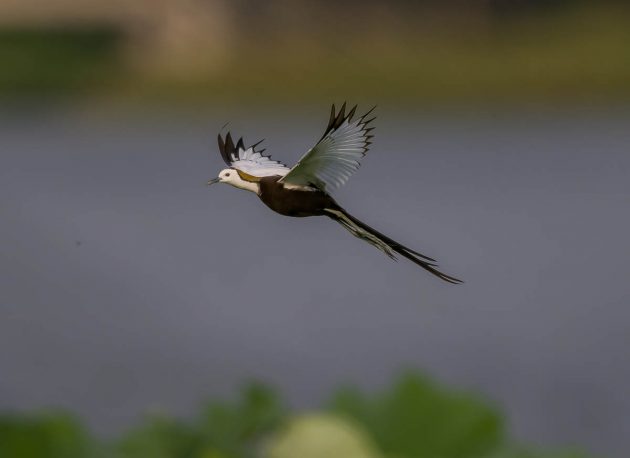
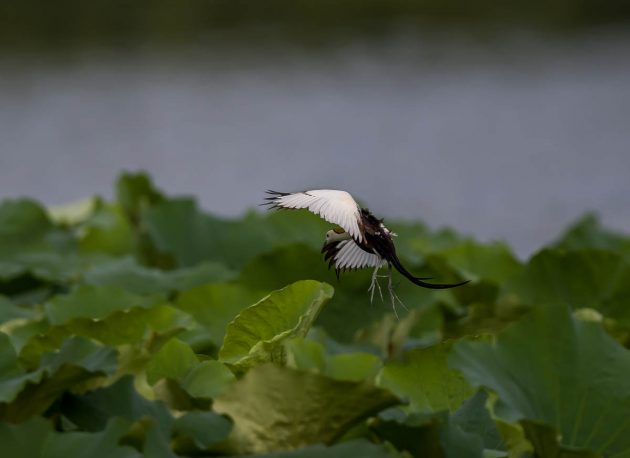
I have written about the interesting sex life of these jacanas a few times already (short version: female mates with male, lays a bunch of eggs for him to incubate and raise the chicks, leaves him, finds another male, repeat). In this short version, the male comes over as the more likable of the two (at least to me, maybe because I am male myself and do not like children). However, there is a darker side to the males as well. Apparently, after a male first mates with a female, he throws out the first one or two eggs she lays in their nest. The likely explanation is that she may still carry sperm from a previous mating with another male, and he wants to avoid raising chicks he has not fathered (source).
Interestingly for me, the research paper calls throwing out the eggs infanticide, which makes me feel a bit queasy as this might potentially be on the wrong side of the Roe vs. Wade (or “Right vs. Wrong”, as The Onion calls it) debate. Hm.
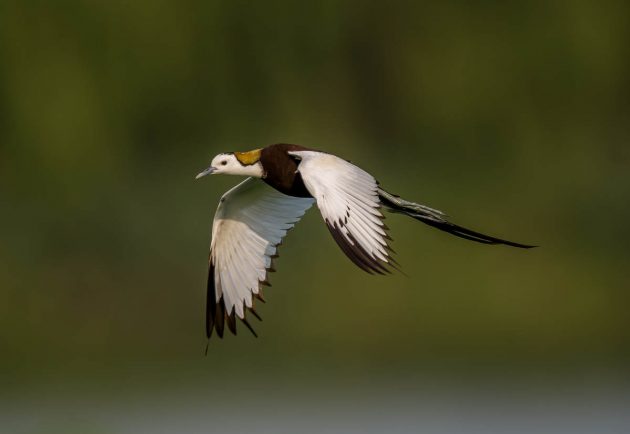
On a lighter note, I remember Tina Fey (of SNL and 30 Rock fame) saying somewhere in her autobiography that every person should have the right not to expose their naked feet in public (or something like that, I am too lazy now to find the exact quote). The point is that I am sure this jacana would agree. Its feet indeed look hideous, whenever it does not manage to hide them with its tail.
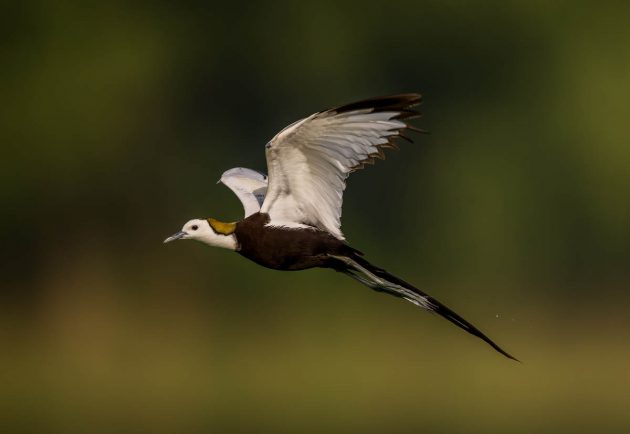
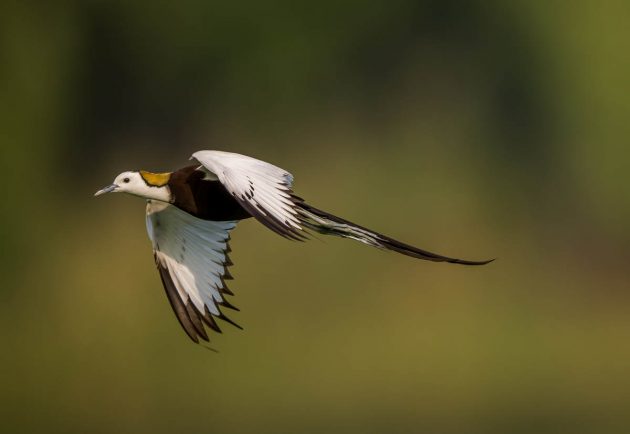
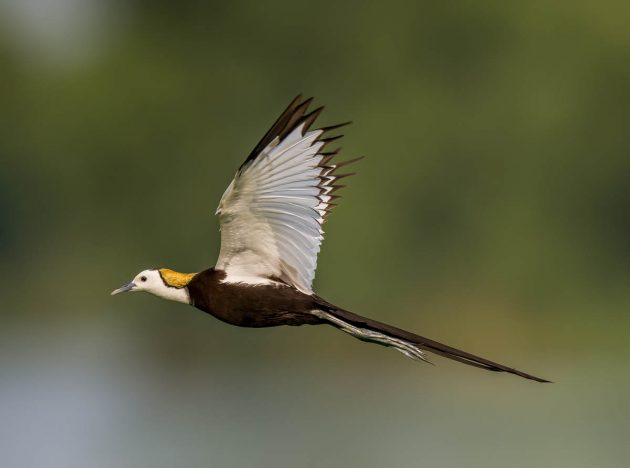
The Little Grebe is of course a very common bird that can still surprise by its beauty in its breeding plumage. If this statement sounds a bit pretentious, then that is because it is a bit pretentious.
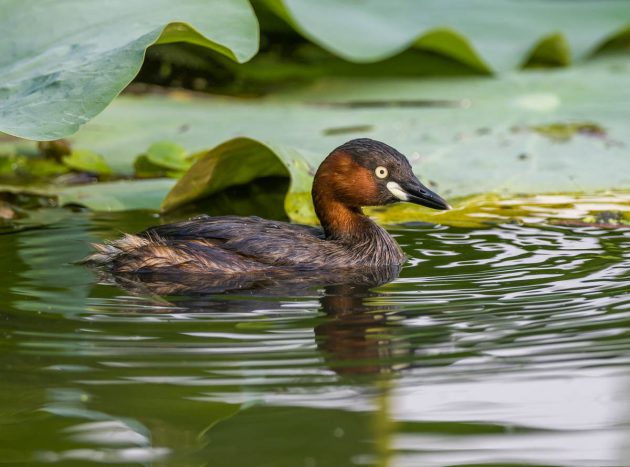
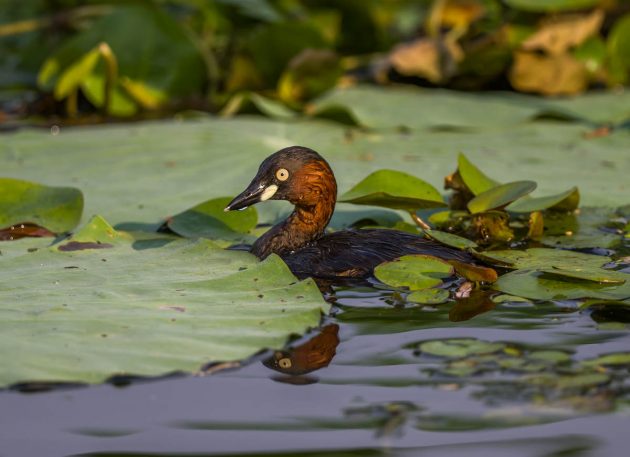
The Common Moorhen in the below photo looks like a proud German housewife to me. Coming from somebody who has exiled himself to China, this is not exactly a compliment.
Maybe female readers might be delighted to read an excerpt of a study on this species describing the courtship behavior and mating preferences:
“Females initiate courtship more frequently than males and compete with each other to pair with small males with large fat reserves”. Somehow I picture a pub with a large number of attractive women flocking around short middle-aged men with beer bellies, desperately seeking their attention.
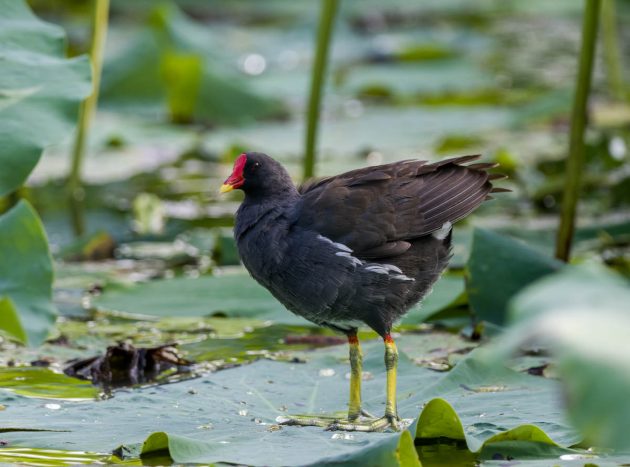
The White Wagtail gets (part of) its name from its habit of wagging its tail. An older paper tries to clarify the function of this tail-wagging – flushing insects, displaying submission, or signaling an individual’s state of alertness to predators? It seems the author favors the last explanation but does not sound fully convinced himself (“it may be an honest signal of vigilance during both feeding and preening”). It may also just indicate that the bird wants to pee but thinks it is not quite the right place and time to do so (my hypothesis, not disproven yet).
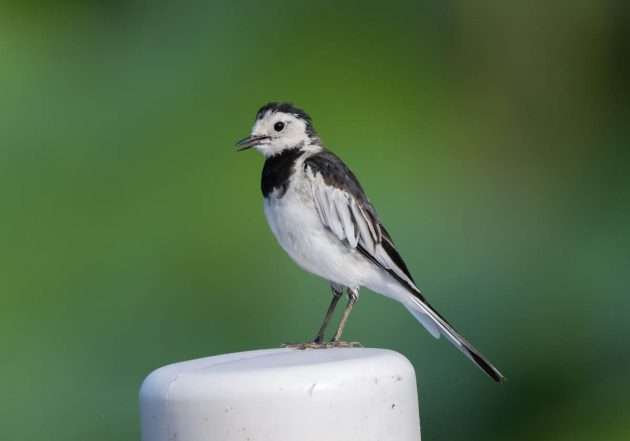
(This is as good a moment as any to quote Hitchens’s Razor: “What can be asserted without evidence can also be dismissed without evidence.” Or my own dumbed-down version, less elegantly phrased: “If you do not provide decent proof for a statement, I will not even bother to argue with you”. Of course, if properly observed, Hitchens’s Razor would mean the immediate end of Donald Trump’s career as a politician, though he might still be able to earn some money as a game show host).
eBird describes the Grey-capped Greenfinch as “a bright gregarious finch”, so I am glad I am not one of them, preferring to spend most of my time alone.
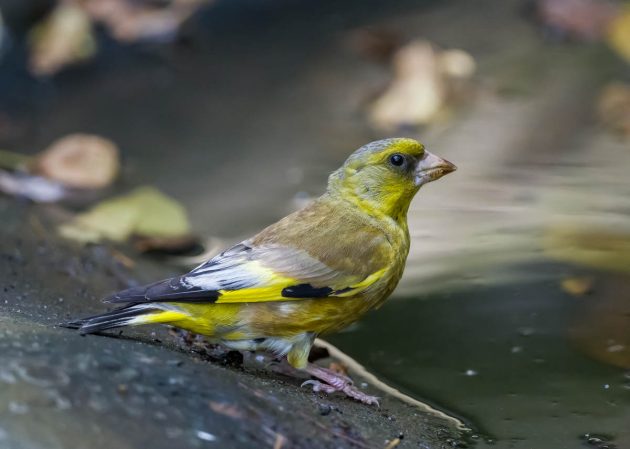
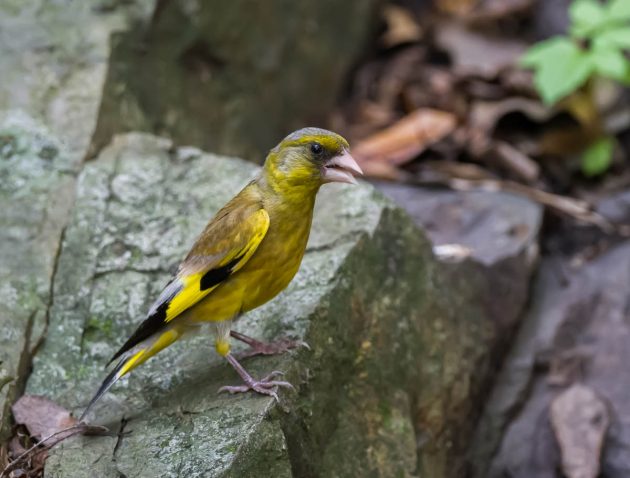
Trust me: You would not look any less ridiculous than this Oriental Magpie-Robin if you were molting.
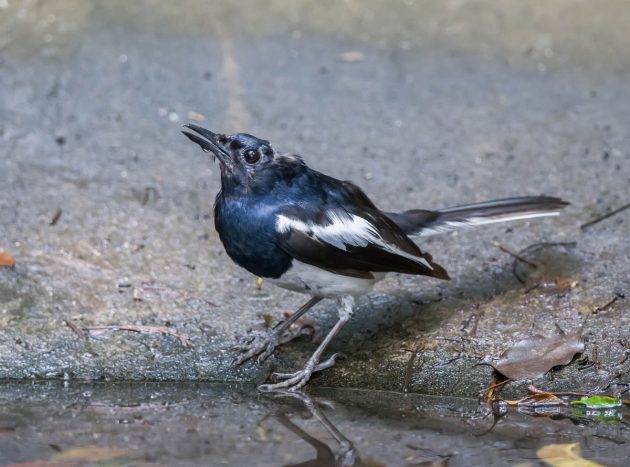
With an obvious hint of disapproval, the HBW remarks that for this species, the “nest [is] a small or bulky but always untidy pad”. I suspect the author of these lines lives with teenage children and uses the description of the magpie-robin to vent some frustration with them.
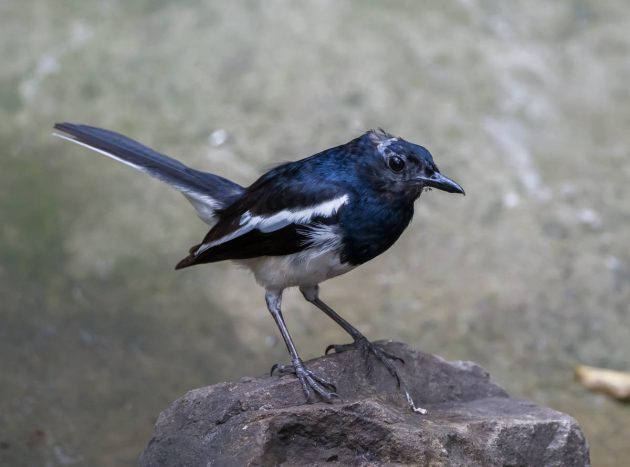
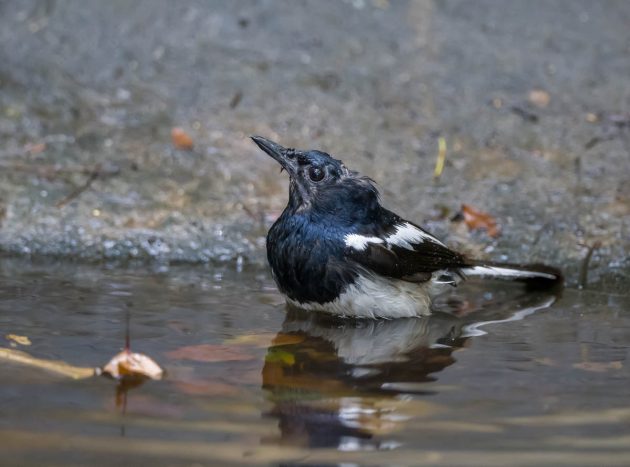
Companies selling washing powder might consider using the White-rumped Munia as a nice example for textiles washed with a competitive product: “You call this white?”
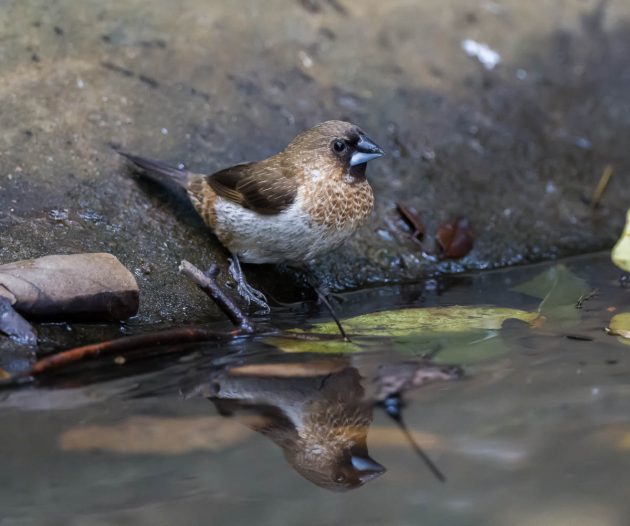
I have a scientific background myself, and I guess some experiments on animals may sometimes be justifiable, but others just leave me disgusted, such as this one. While I cannot claim to fully understand the topic, “The Impact of Deafness to the Survival of the Newborn Cells in the Brain of Juvenile White-rumped Munia, Lonchura striata“, the authors first deafened some White-rumped Munias via surgery and then killed them a few weeks later. And I think it is safe to say that the results of their work did not result in finding a cure for cancer – though it may have provided them with some grant money. But it is all for science, I hear them say.
Swinhoe’s White-eye was just promoted to the rank of a full species in 2018. I still think such a sentence is kind of strange given that nothing changed for the bird at all. But maybe, just maybe, the members of this species are quietly very happy about the promotion, even while not showing any obvious outward signs of exuberant celebration.
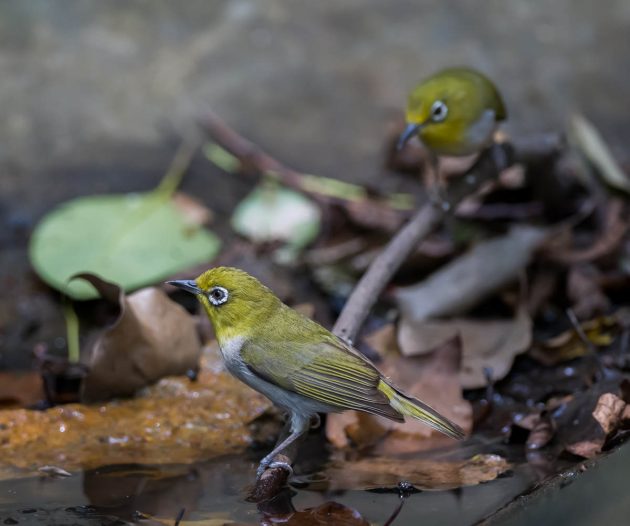
Fengxian is a coastal part of Shanghai that makes me wonder about the quality of my schooling. More and more parts of it are fenced off and closed to the public – given that China is a socialist country, the definition of socialism I learned at school surely must have been wrong.
Anyway, the few open parts still have some nice birds – first of all, a few Greater Painted-snipes. All three I have seen are males, which in this species are the subordinate sex. Fans of jacanas will probably also like Greater Painted-snipes, as chick care is a male job in this species.
(I bet that if male Greater Painted-snipes have a get-together, they bitch a lot about how insensitive the females are, how they leave all the chick-rearing work to them, how they never listen, and how they seem to think mostly with their sex organs).
I cannot decide which photos to show of them, so I am showing too many.

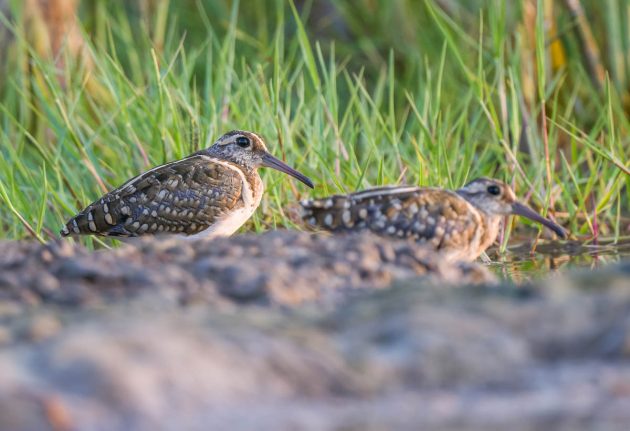
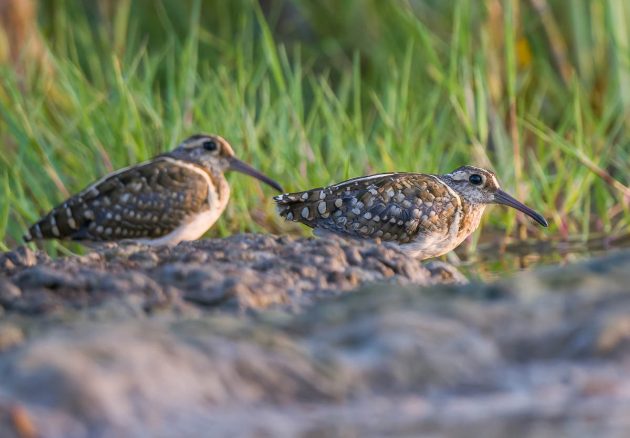
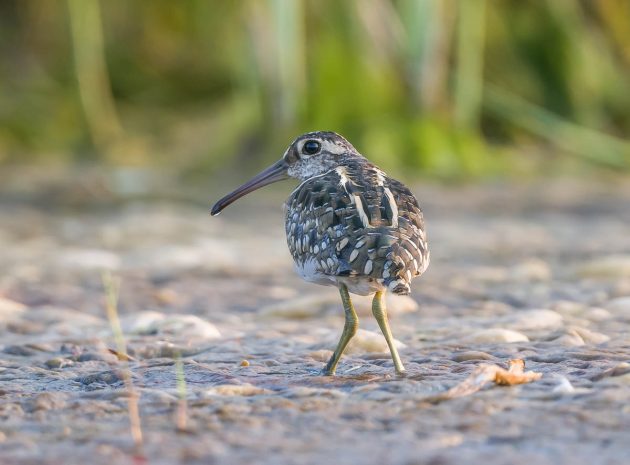
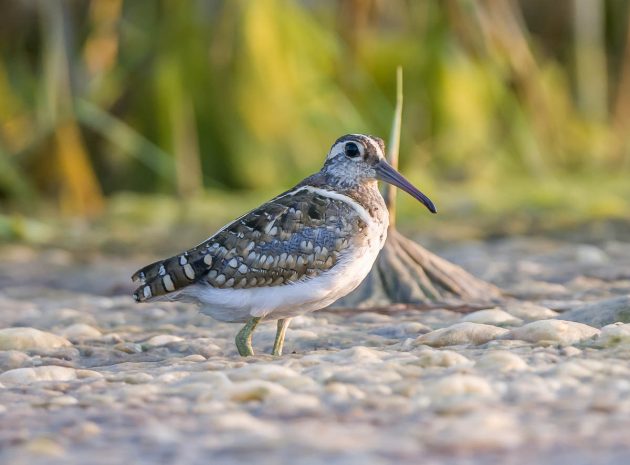
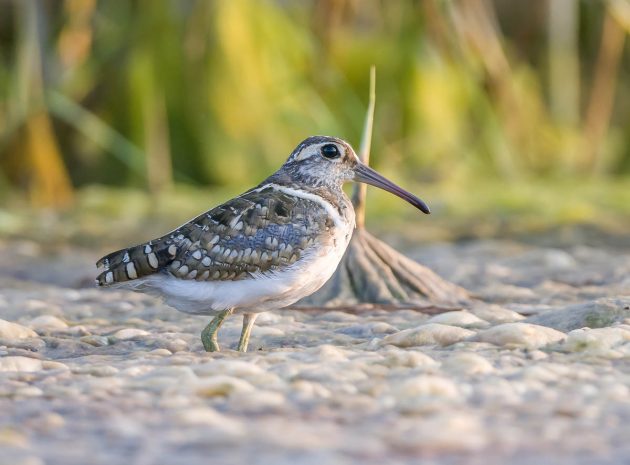
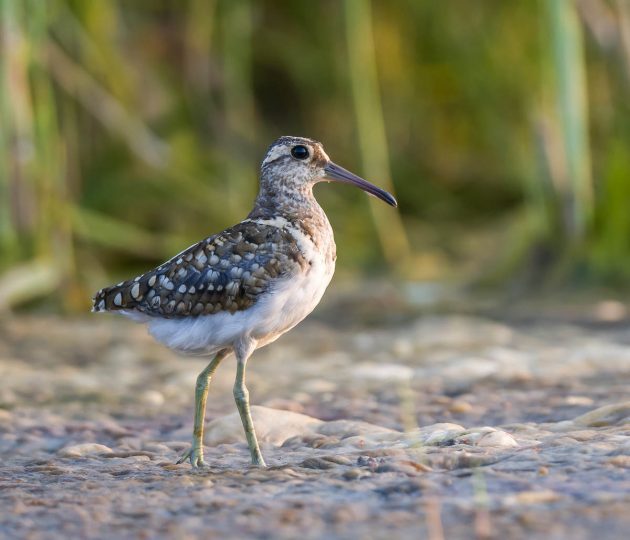
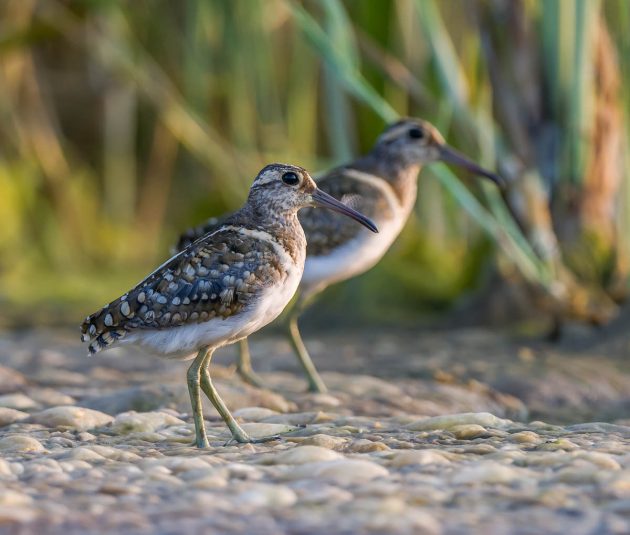
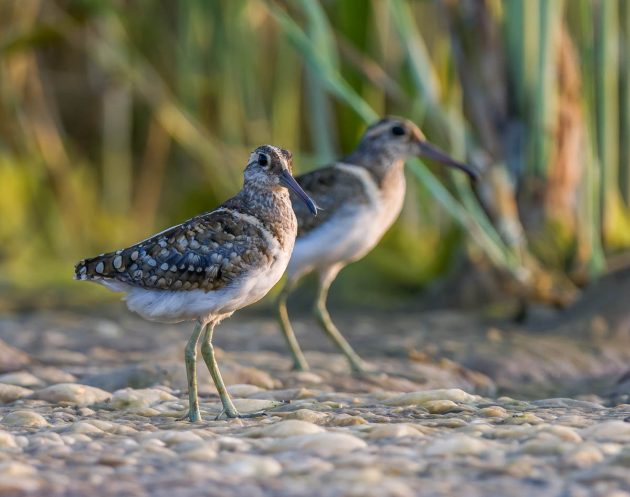
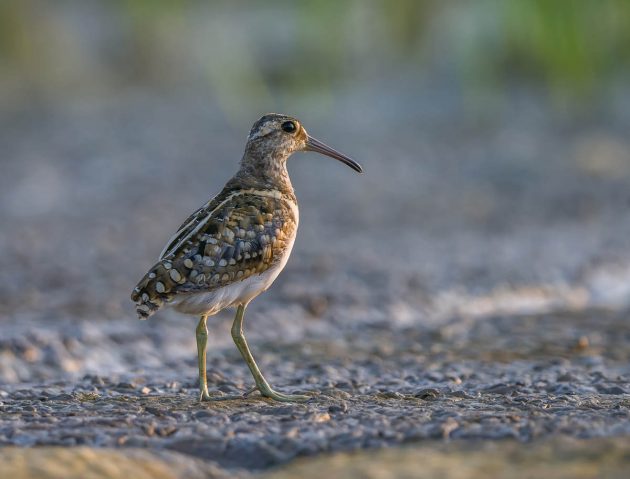
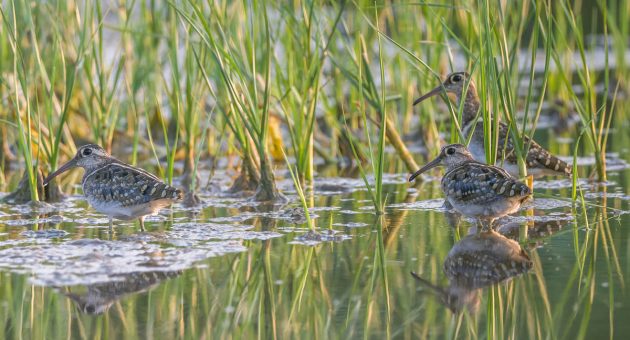
There was also an immature female, probably already thinking about how next year she will be able to boss all the males around. This is the kind of attitude that may turn the males into future Trump voters.
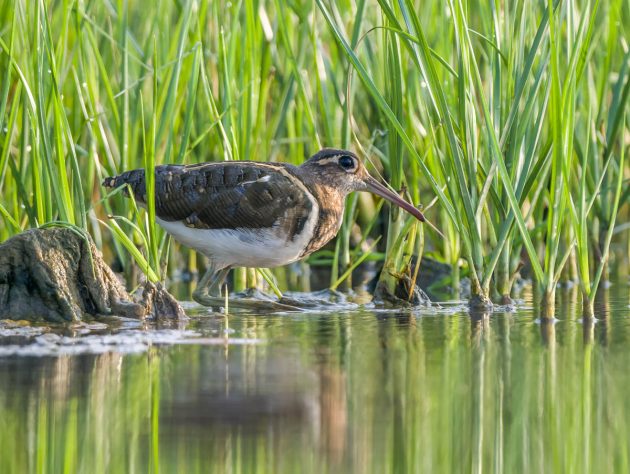
Juvenile Black-crowned Night Herons to me still look very much like the dinosaurs they are.

Later, they gradually …
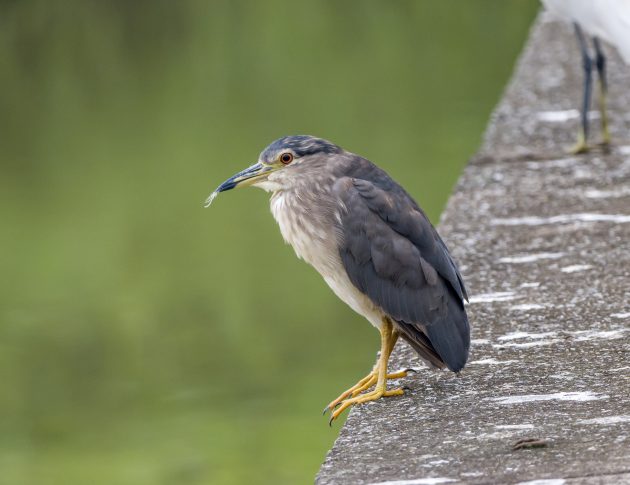
… adapt the adult plumage.
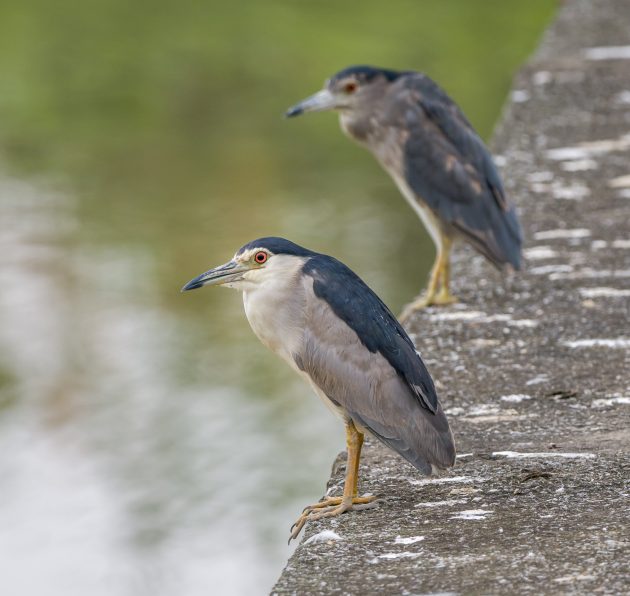
Black-naped Orioles are breeding in Fengxian. Here is a presumed pair.
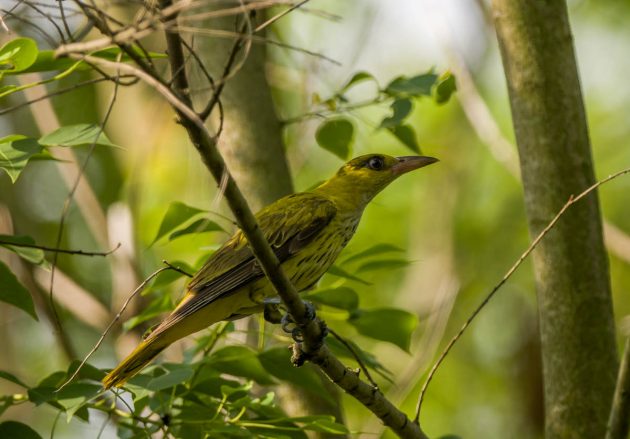
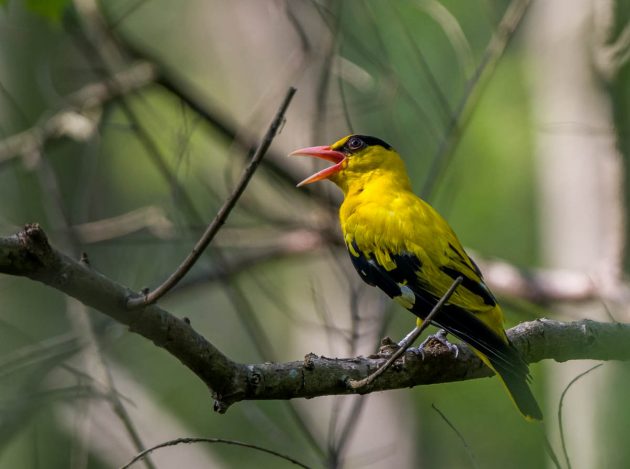
Interestingly, Black-naped Orioles on migration also use green roofs in Bangkok (source) – possibly because they will not be mobbed by Collared Kingfishers there (source).
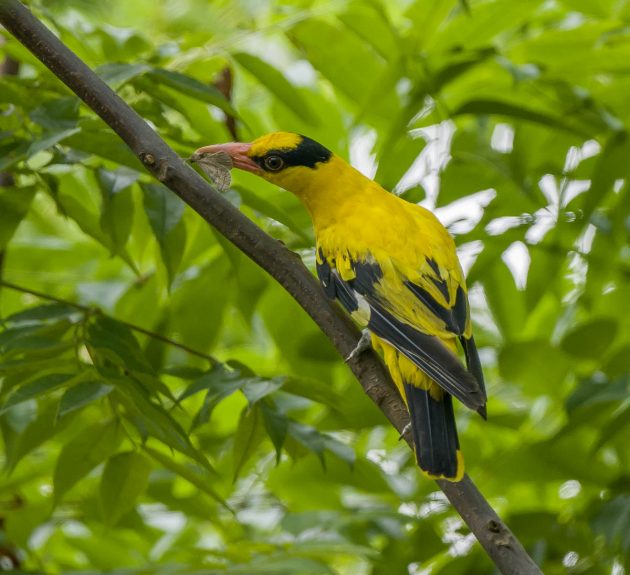
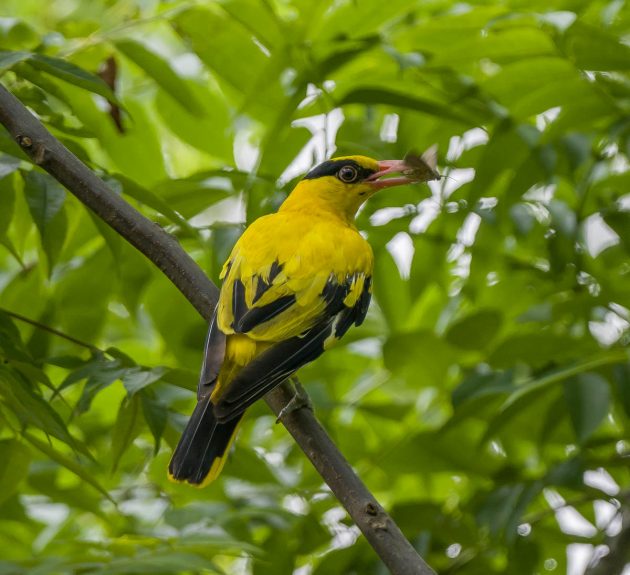
Somehow I did not think Cattle Egrets would eat dragonflies (shouldn’t they eat beef, at least judging from their name?) but they do.
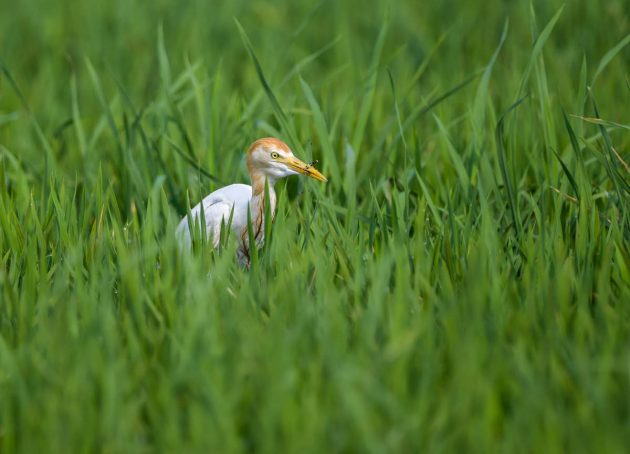
The HBW claims that large quantities of eggs and birds of Chinese Pond Herons are taken for food in parts of China for food. No wonder the heron usually nests high up on trees, for example, 17 m up on average at Ichang in Eastern China (HBW).
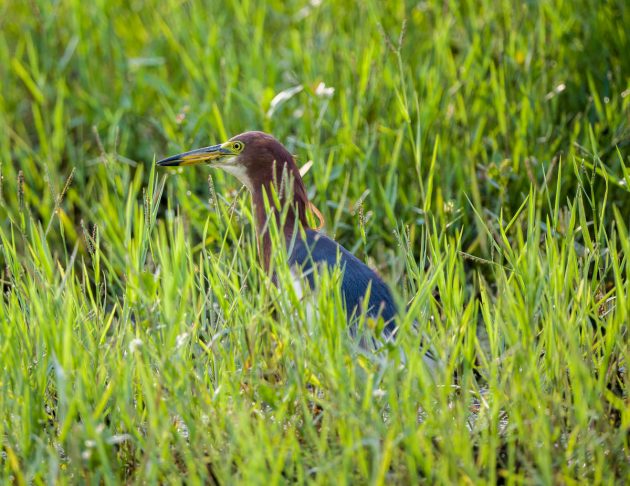
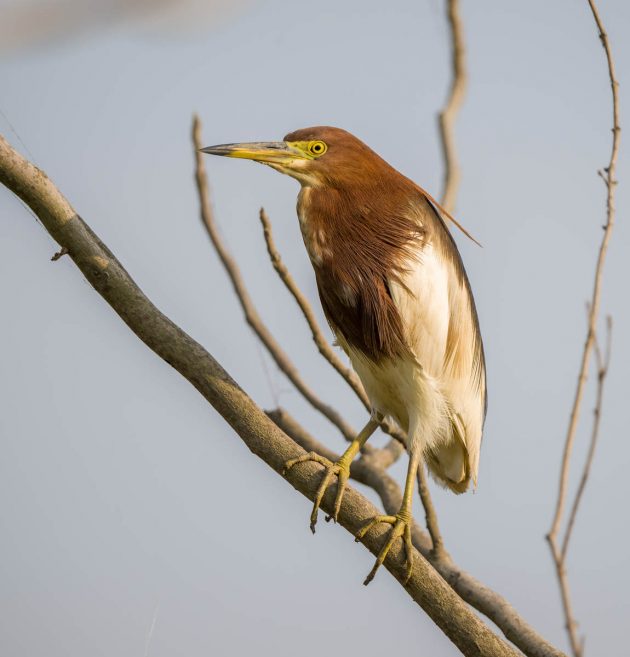
I am not sure I would like being called large and rather heavily built but Birdlife Australia seems less concerned about the feelings of Common Greenshanks, describing the species as “a large, rather heavily built wader“. With this kind of attitude towards them, it is not surprising Common Greenshanks do not breed in Australia but migrate north to the Palaearctic region for that. Otherwise, the Australians would probably body-shame the greenshank chicks as well.
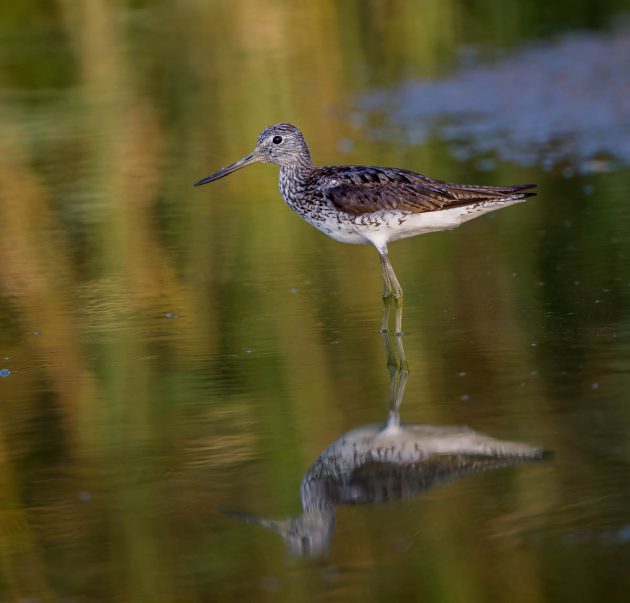
When nesting, Scaly-breasted Munias seem to value safety over quietness. A study on Hainan birds of the species titled “Breeding in a noisy world” found that 98.3% nested in trees along the arterial road, which had a relatively high traffic volume. The authors state that “The nesting of scaly-breasted munias in trees lining an arterial road may be an anti-predation strategy, in which trees with denser coverage and less fruit in high-traffic areas are preferentially used for nesting.”
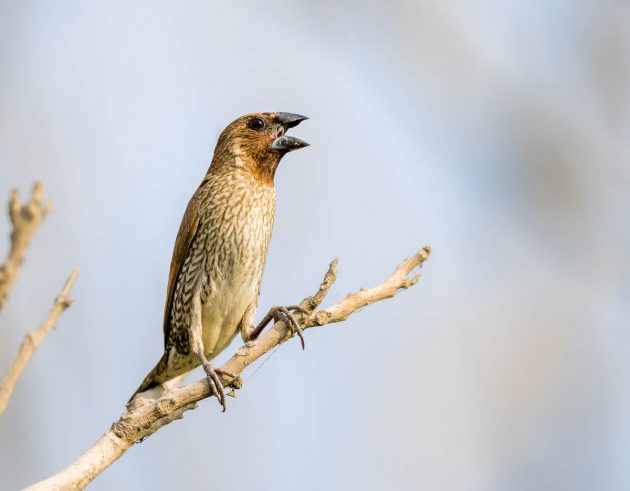
I do not know how people wrote blog posts in the days before the internet. I was just wondering how the Wood Sandpiper got its name, and finally found the answer online: “The name of this bird comes from its habit of using nests of other species located in trees and shrubs to breed. Normally sandpipers place their nests on the ground. This particular species does just the opposite.” Very easy to add to this post.
Well, I guess in the days before the internet, people simply did not write blog posts. One puzzle solved.
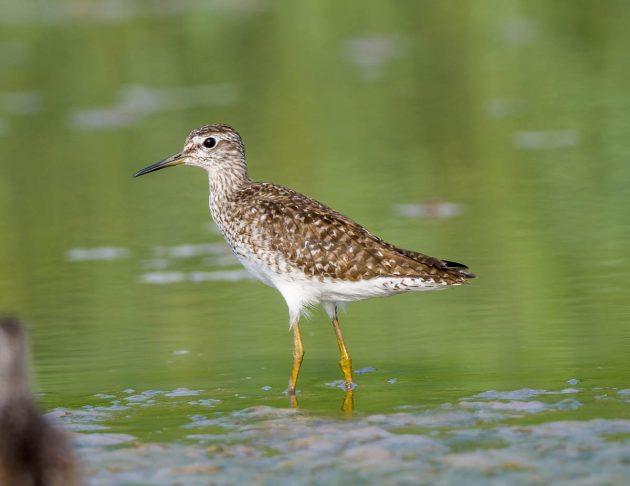
Lesser Coucals still complain about being associated with the sins of the cuckoo family – “How would you like to be seen as an accomplice of Harvey Weinstein or Jeffrey Epstein”? I can see their point.
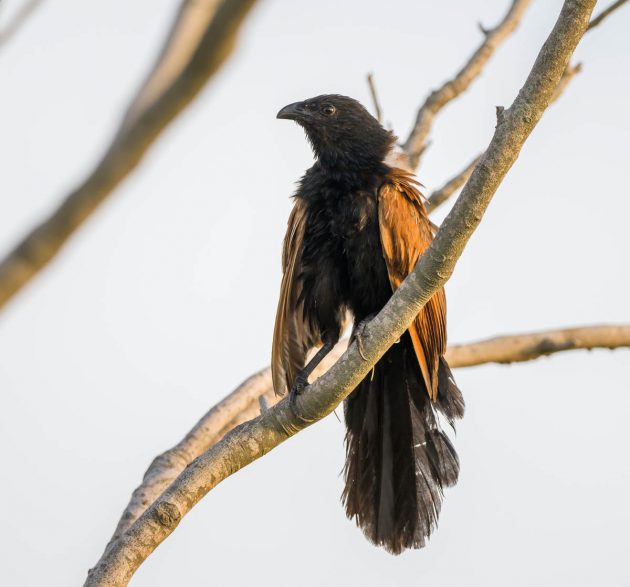
This one does need a set of new feathers – but of course not a lengthy jail term.
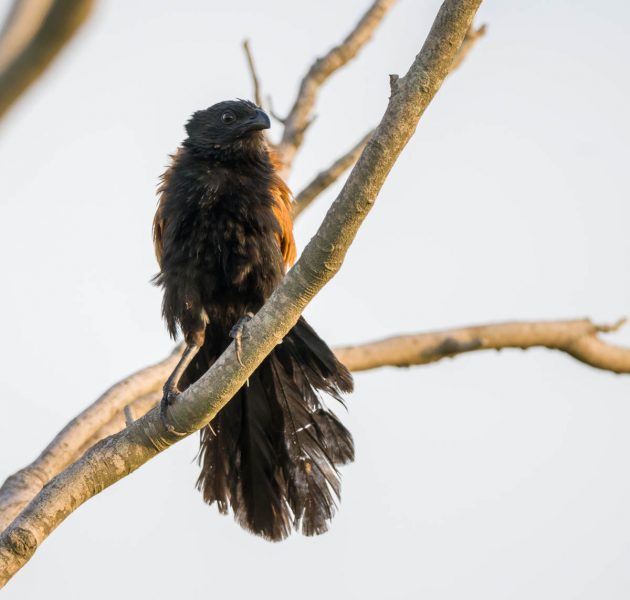
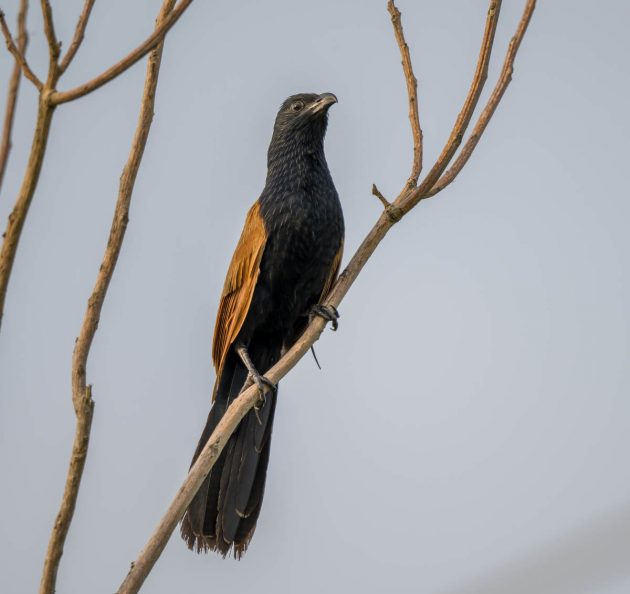
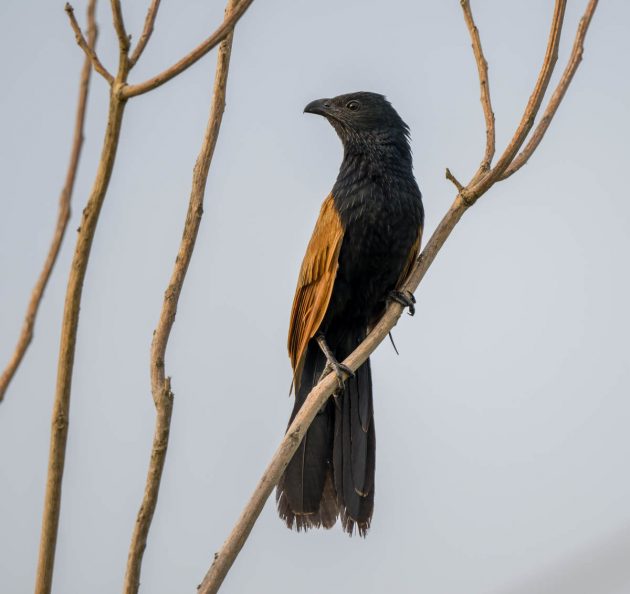
Black-winged Stilts sometimes seem to have problems dealing with their long legs, e.g., when looking for food below …
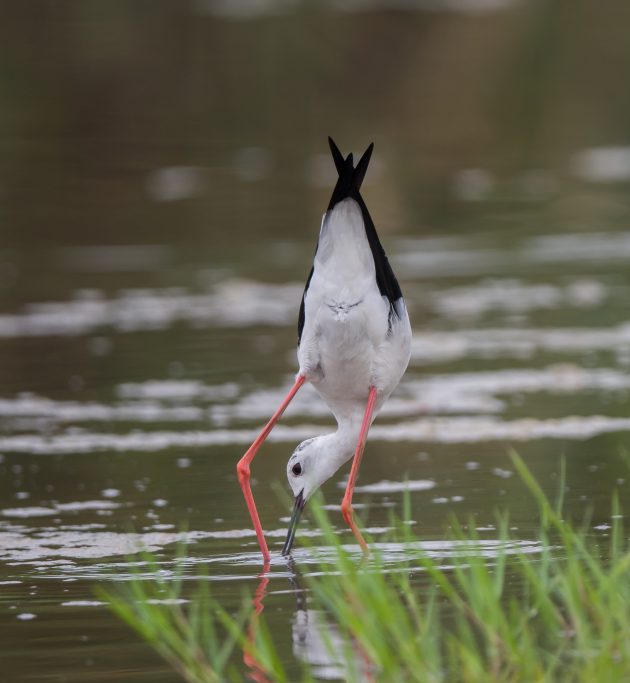
… or when incubating. Foldability helps, though.
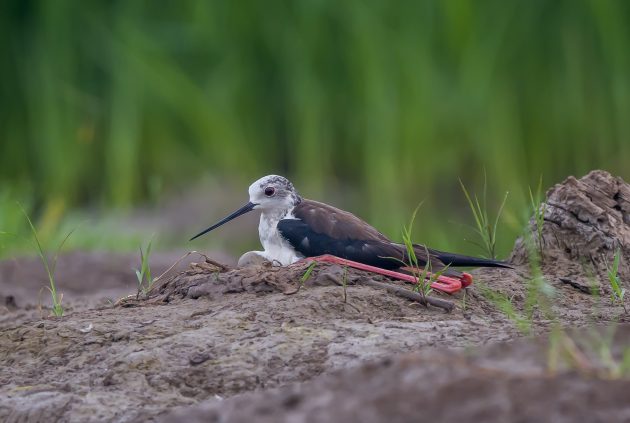
In particular, I think they need to take expensive Yoga lessons in order to sit down on their eggs without damaging them. See the sequence below.
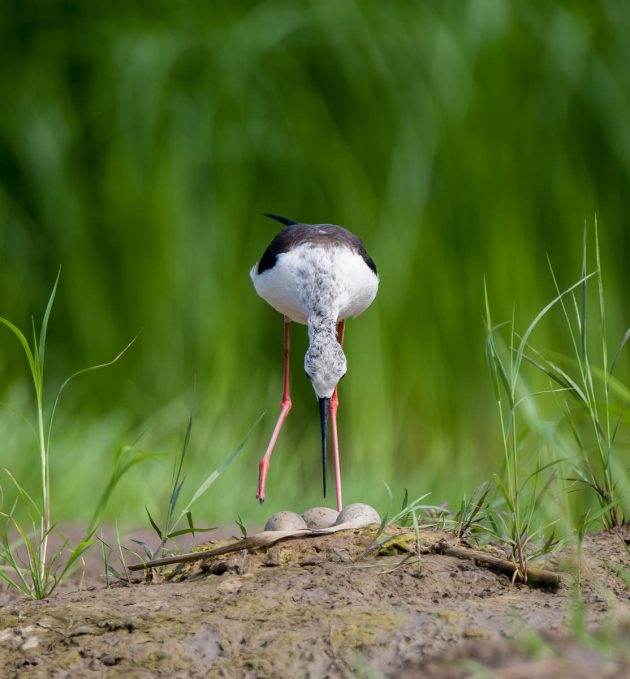
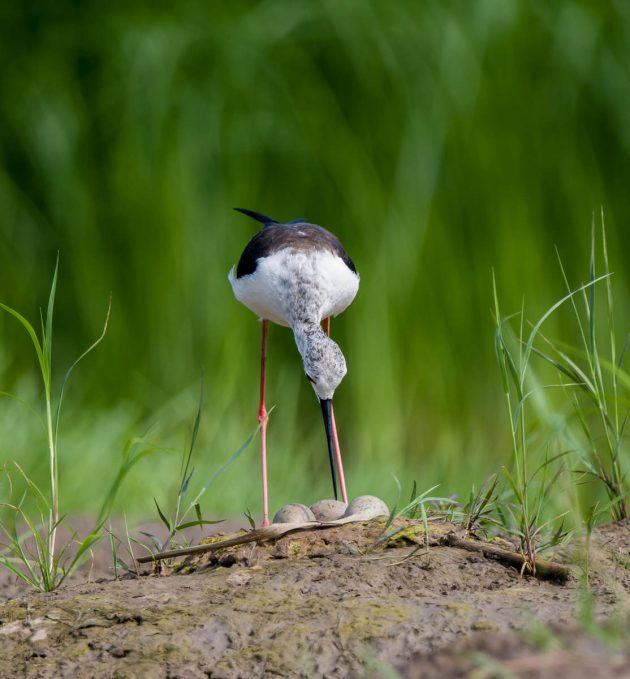
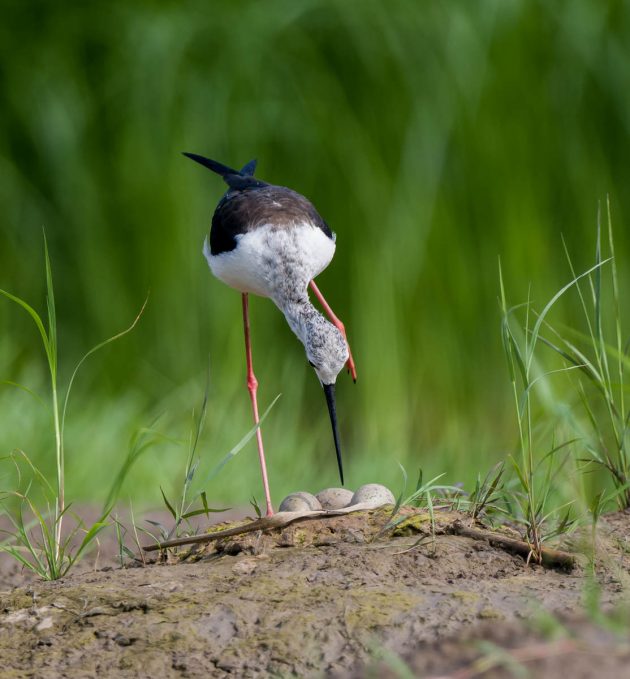
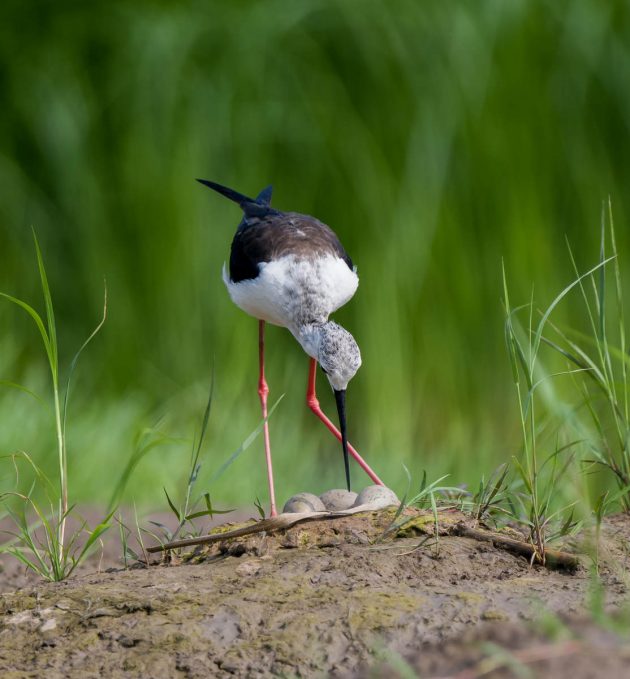
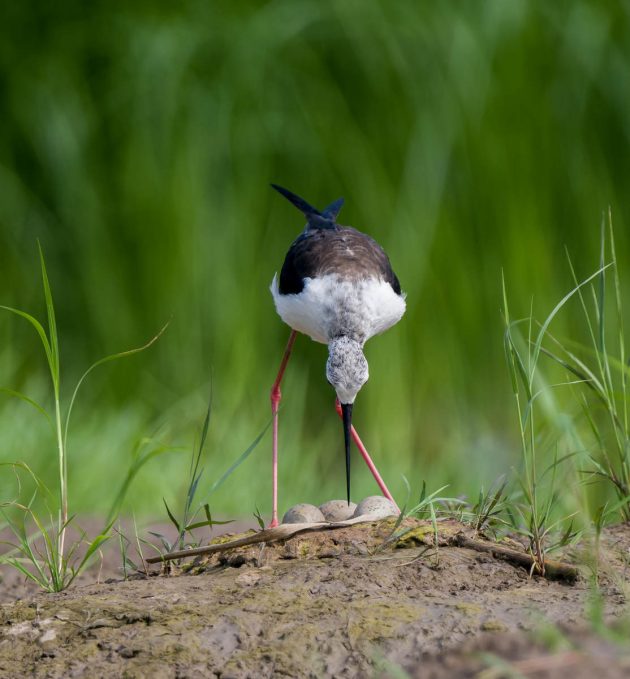
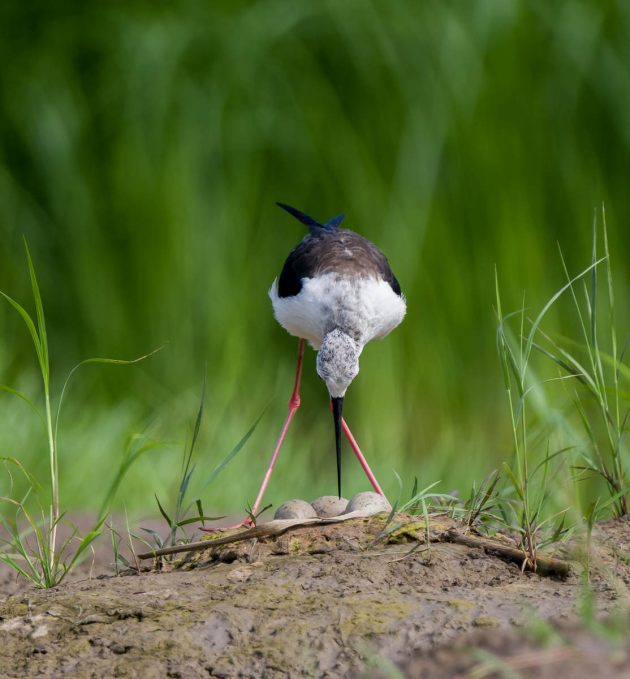
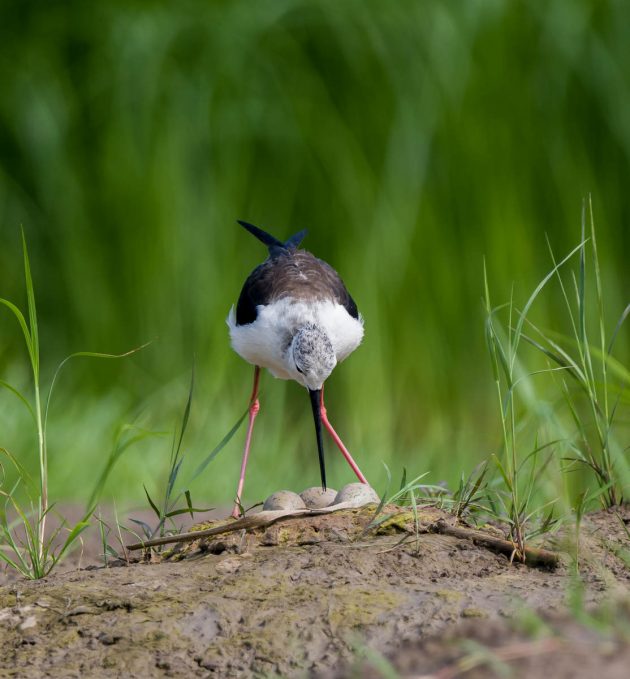
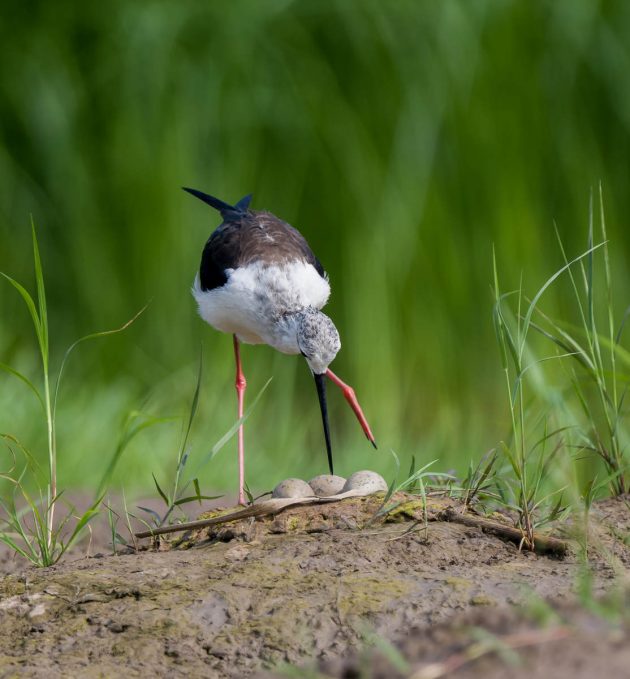
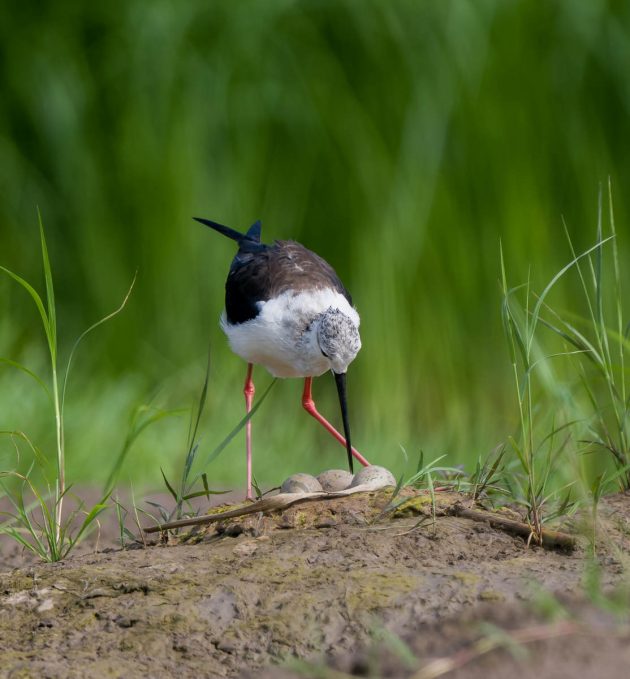
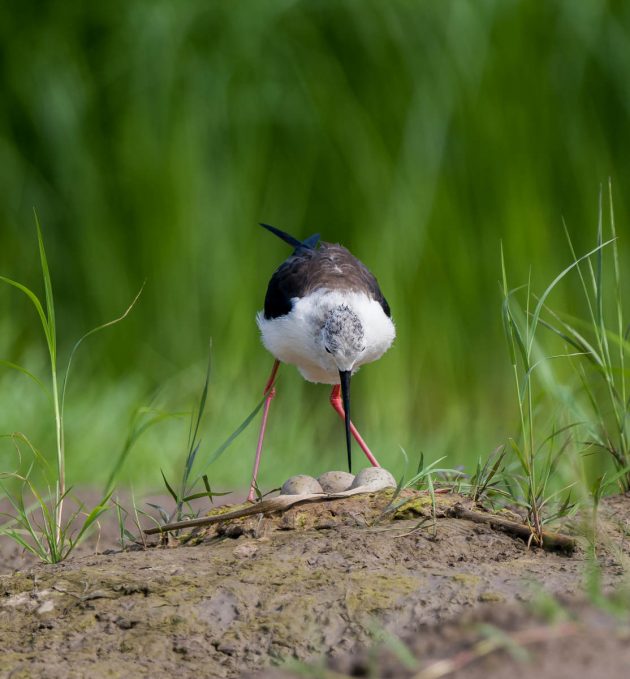
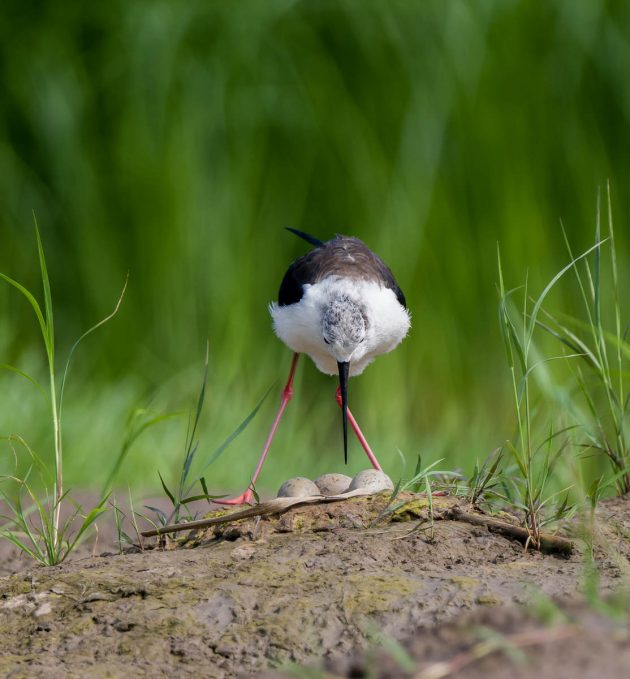
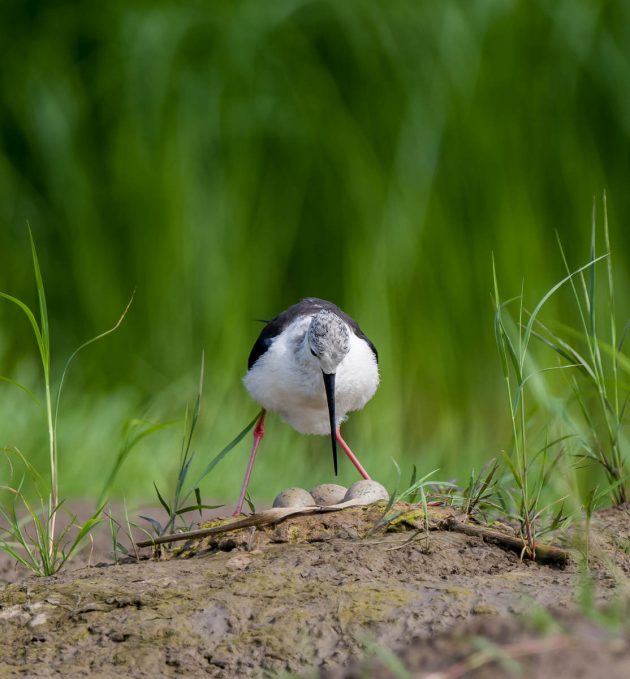
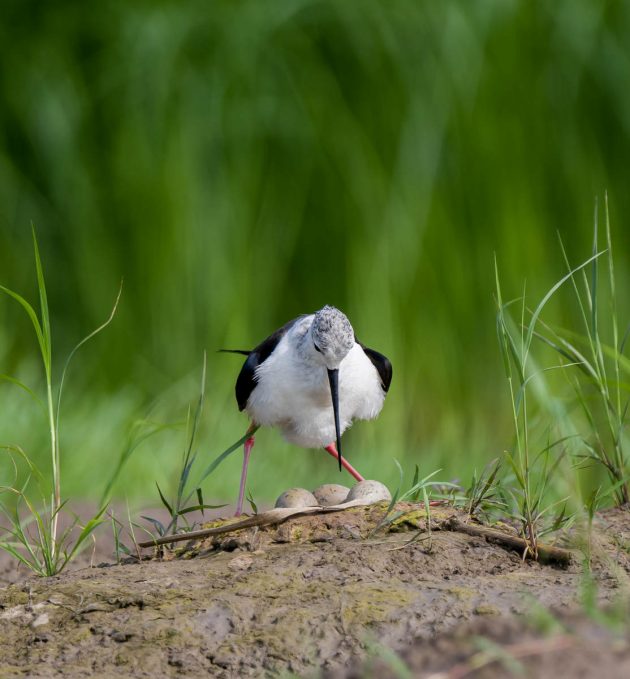
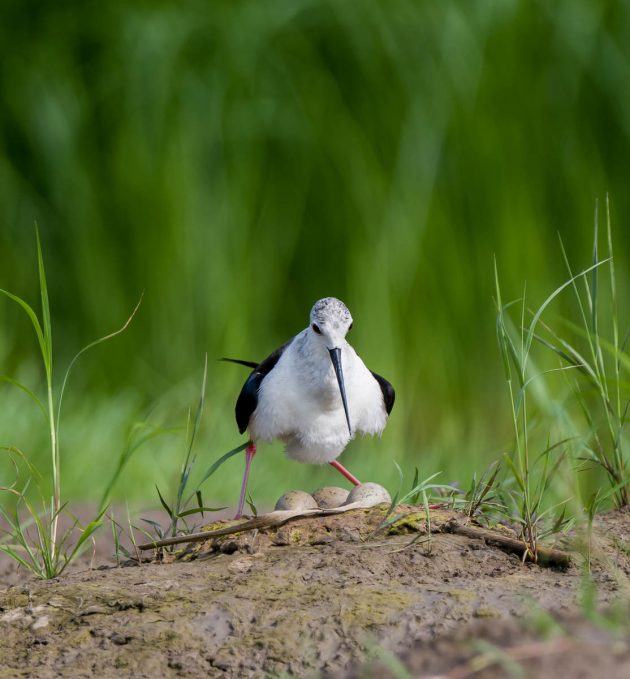
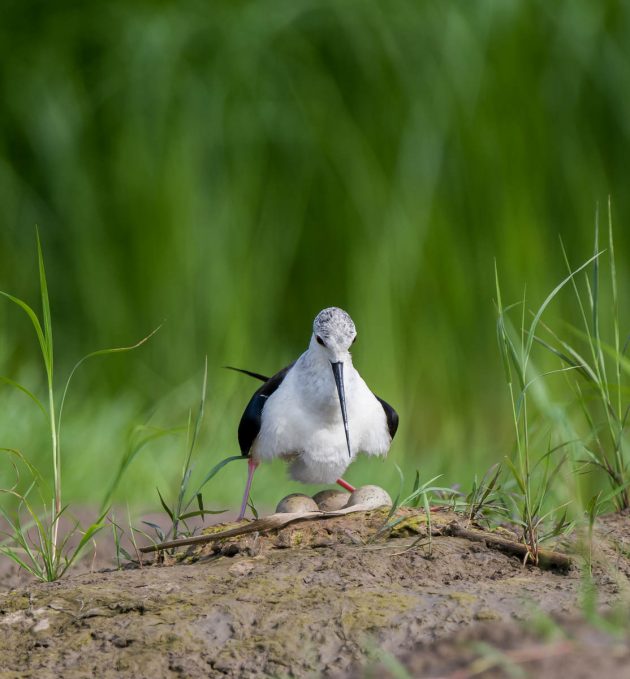
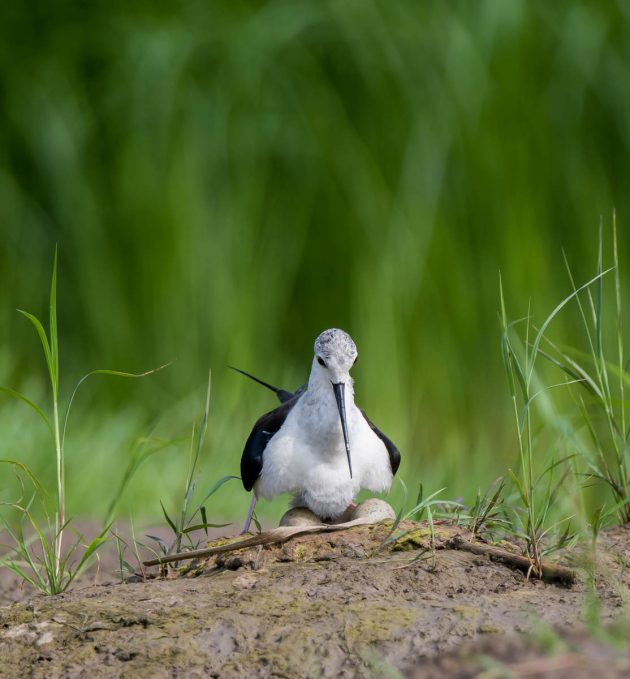
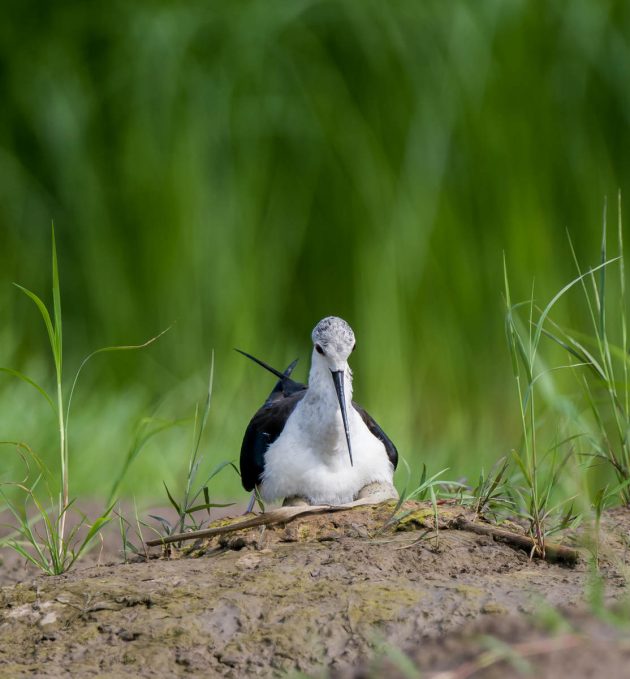
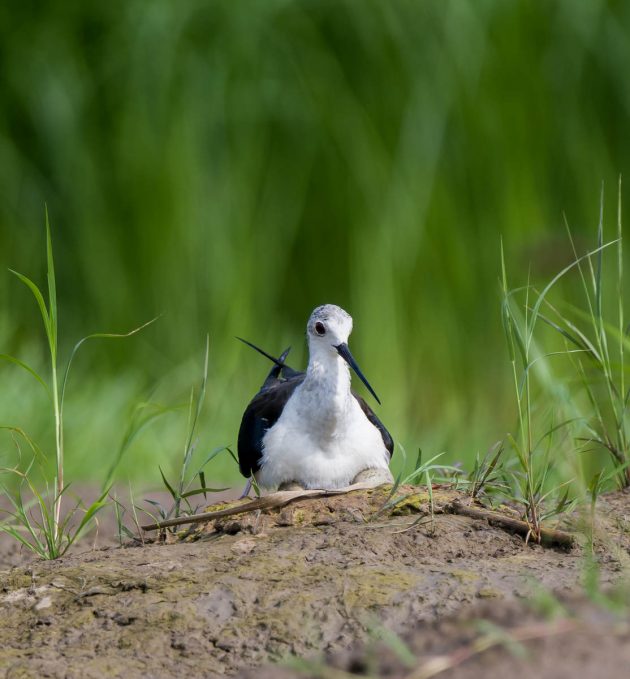
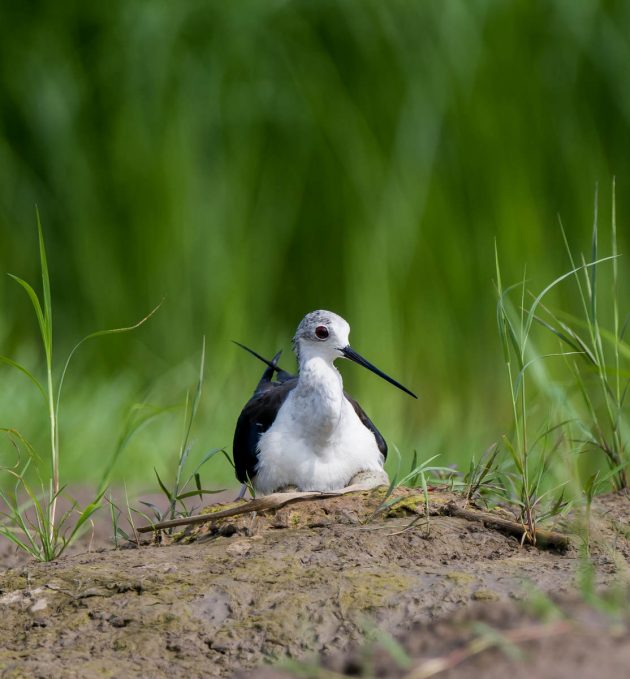
From another perspective, it looks like this:
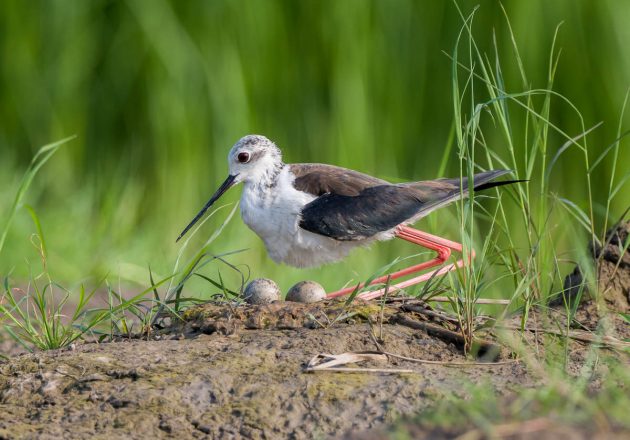
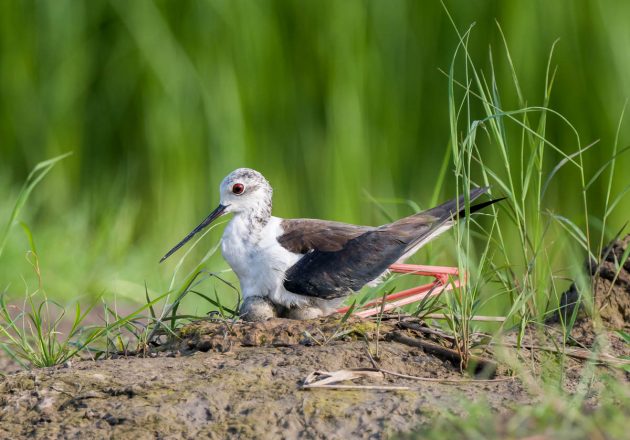
Another hassle for them is when other birds get too close to the eggs. While I was watching, the stilt chased away two Little Egrets. Then, two poor Greater Painted-snipe came close, probably meaning no harm. But the stilt chided them anyway.
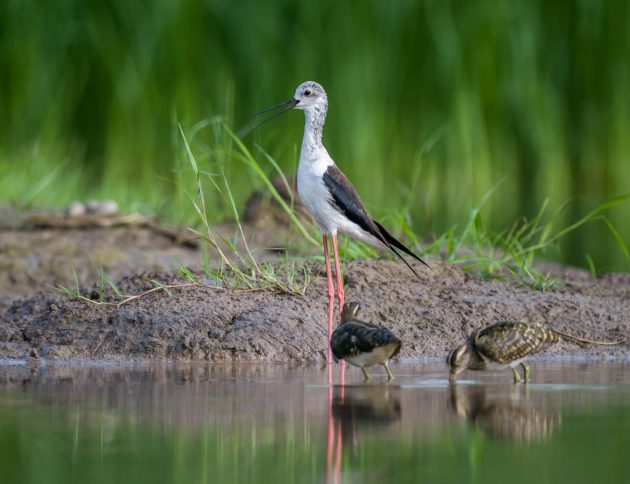
Which in turn frightened the snipes, and they reacted in their own way.
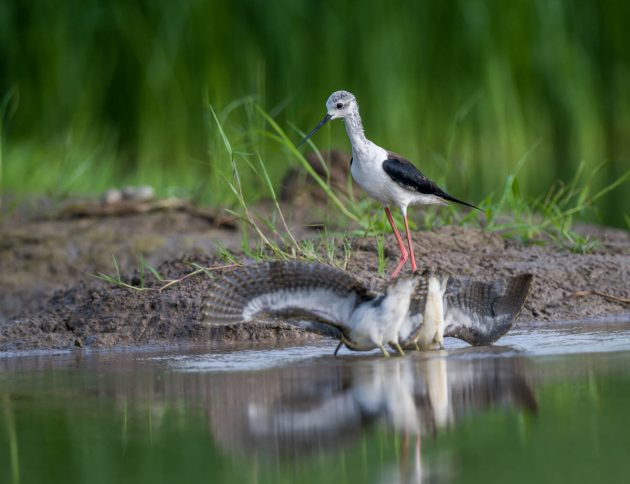
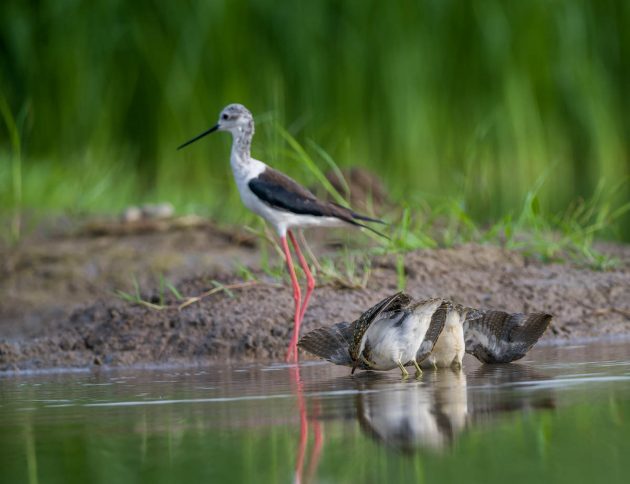
That is the way some wars start, I guess.
After watching the stilt and the snipes from behind some reeds for four hours without moving, my legs actually felt worse than that of the stilt. Or maybe it is because I do not do yoga.
On the plus side, hiding for so long, you can get close views even of birds that in Shanghai are usually very shy, like these Easter Spot-billed Ducks.

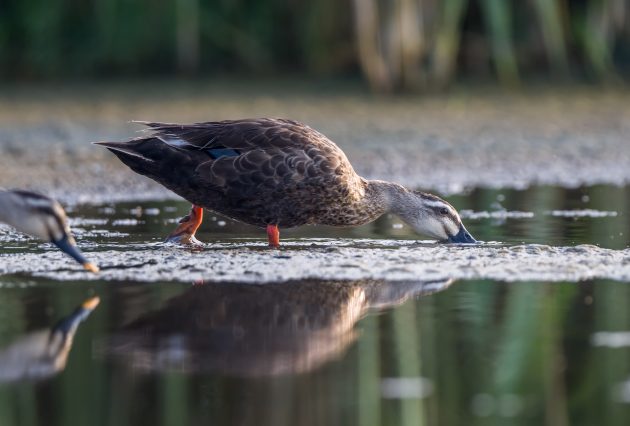
Even Amur Paradise Flycatchers are breeding here – however, the male does not look particularly impressive despite still having long tail feathers. But then, nobody who is molting does.
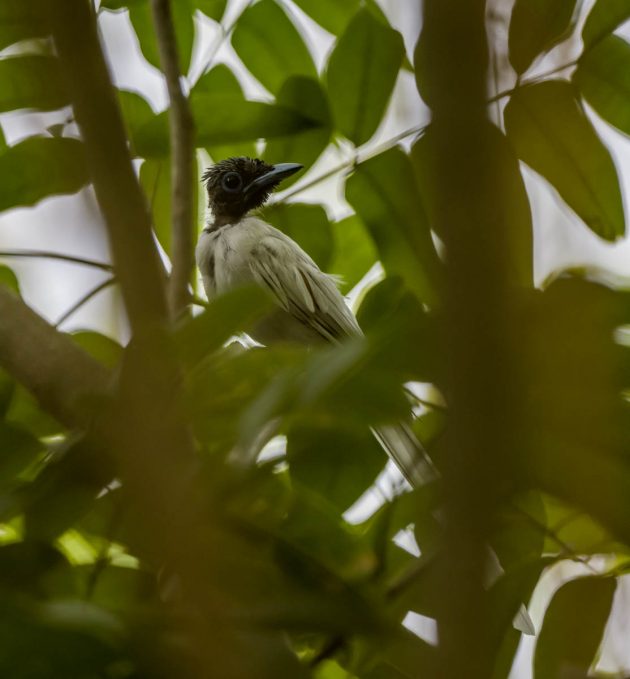
The male wishes to apologize for not being very cooperative in having his photo taken.
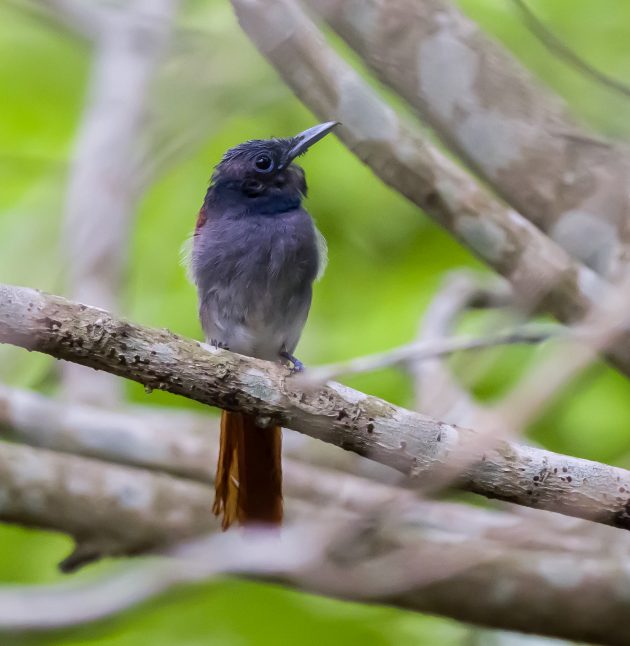
Fengxian has a few other birds presumably breeding here – Black Drongo …
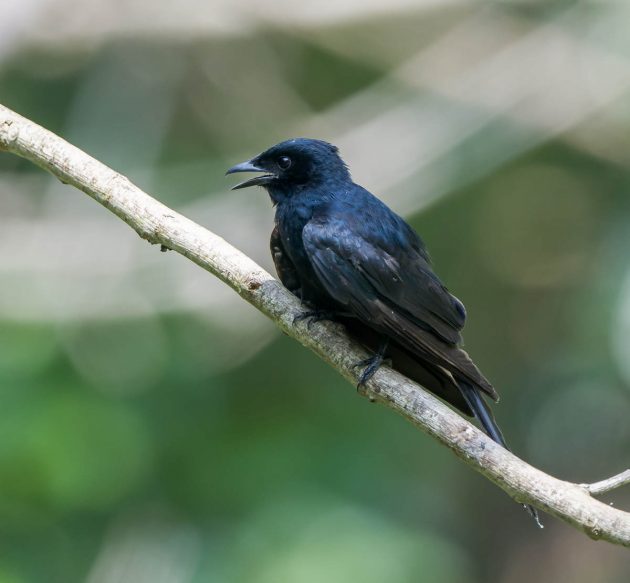
… and Black-winged Cuckoo Shrike.
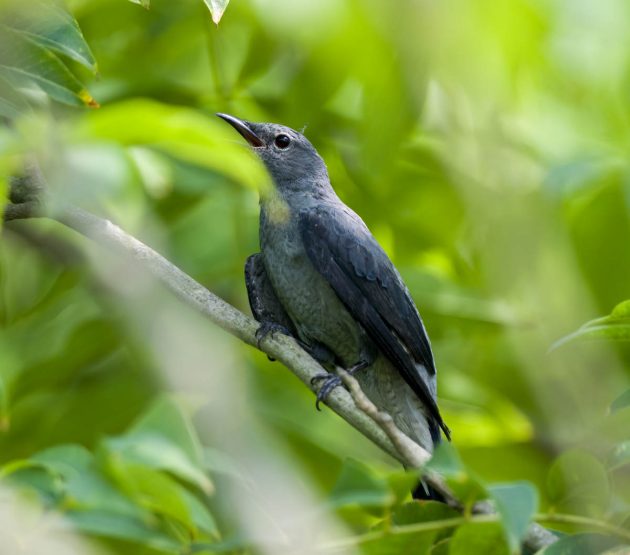
And a Long-toed Stint demonstrates that the name of the species is well-chosen.
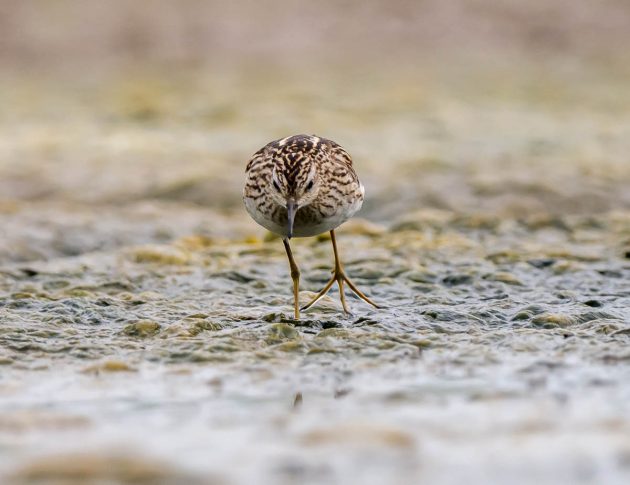
The Latin name for the Long-toed Stint is Calidris subminuta – the “sub” (“near to”) is to distinguish the bird from the Little Stint, Calidris minuta. Highly creative this is not.
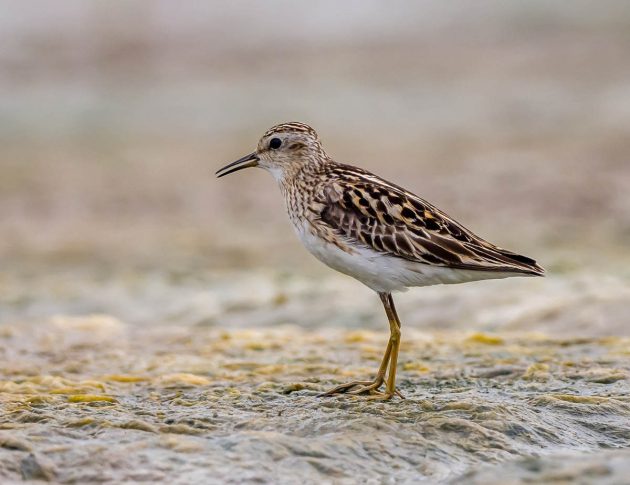
I start enjoying the identification challenge posed by juvenile birds, such as this juvenile Brown Shrike (if that is indeed what it is). If this continues, I might become one of those obnoxious birders liking leaf warblers. At least in my job as a consultant, I only pretend to enjoy challenges – I do not really do though. Easy, unchallenging consulting projects are much preferred.
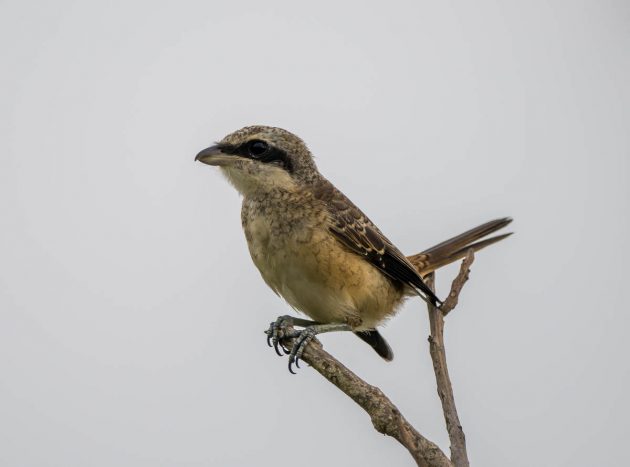
Fengxian also has some Grey-headed Lapwings – both adults …
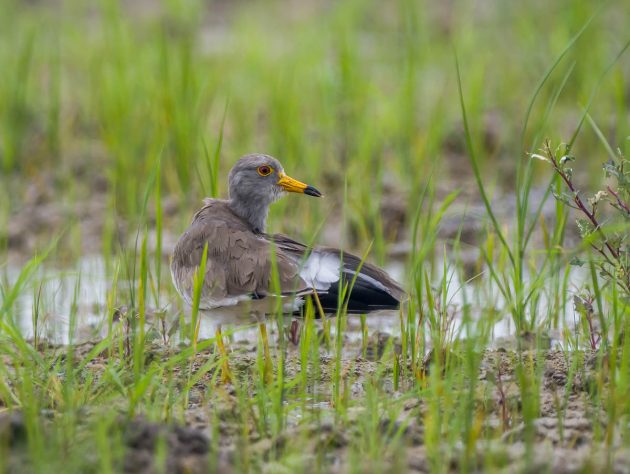
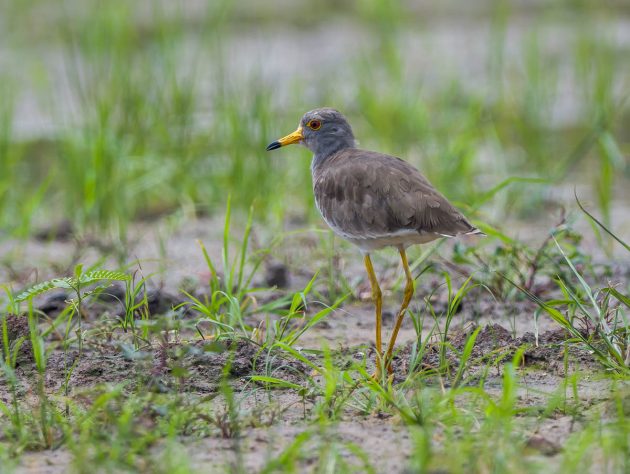
… and juveniles, suggesting that they breed here as well.
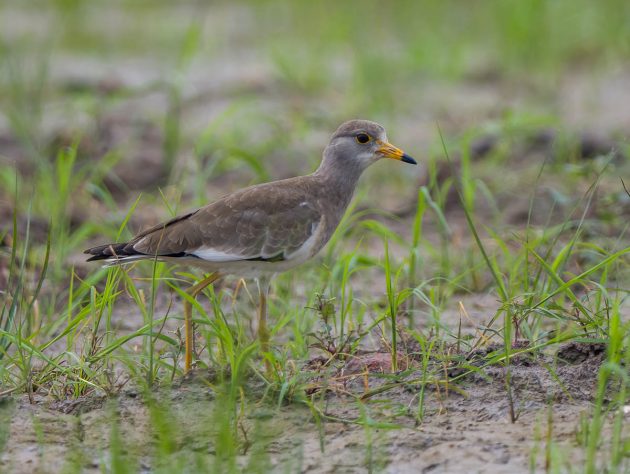
Meanwhile at Nanhui, Pied Kingfishers are discussing the Ukraine war, corruption in politics, and rising fish prices.
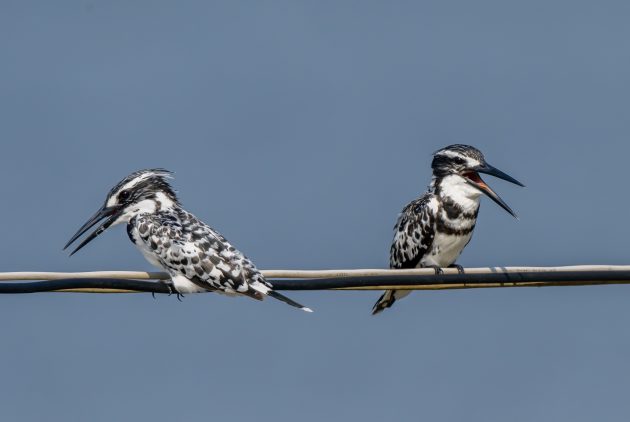
As in this photo, both are talking, this cannot be used to sex the two birds – but the double breast band of the bird on the right identifies it as the male of the pair.
The female actually thinks that the male is quite rude talking at the same time as her. He, while knowing that this is not a very clever point to make with regard to the peace and harmony in their relationship, does not hesitate to wisecrack that the species’ Latin name is rudis, or “rude, wild”. Some men will never learn.
Different from the kingfishers, the Sand Martins of Nanhui are more likely to receive complaints from other species such as Barn Swallows.
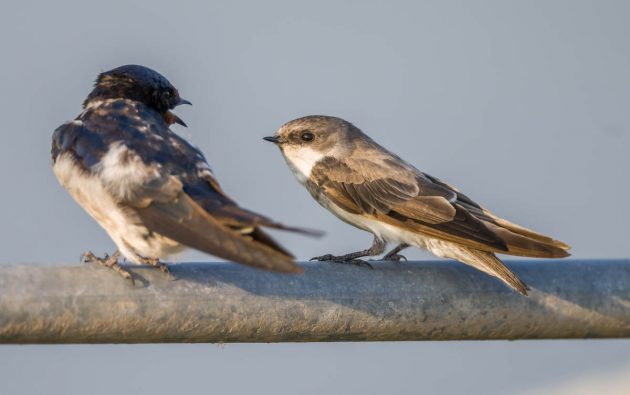
Maybe it is because they sometimes seem to pretend to be vampires?
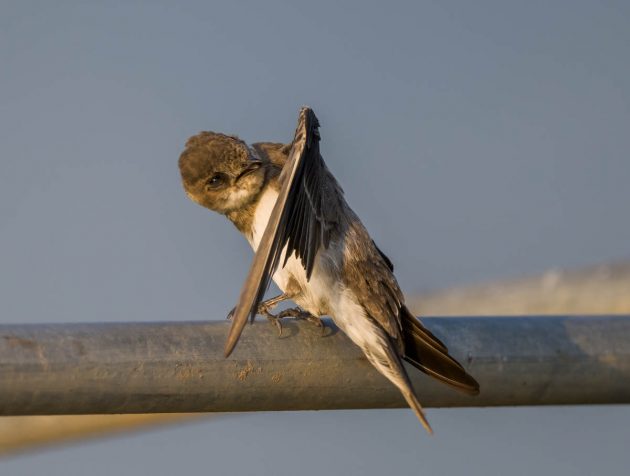
When I saw them, a few of them were just shooting the opening scenes of a Sand Martin action movie.
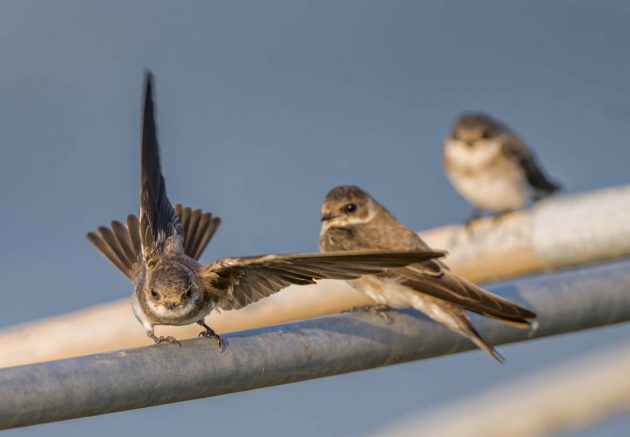
The experienced director was watching, seemingly rather relaxed.
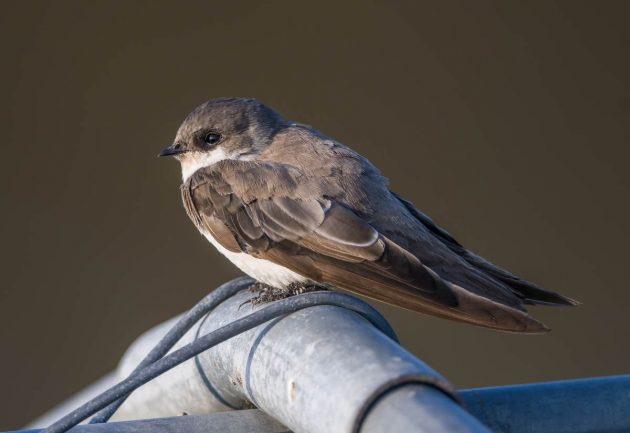
The Barn Swallows – looking a bit down on the Sand Martins, I think – were paying little attention.
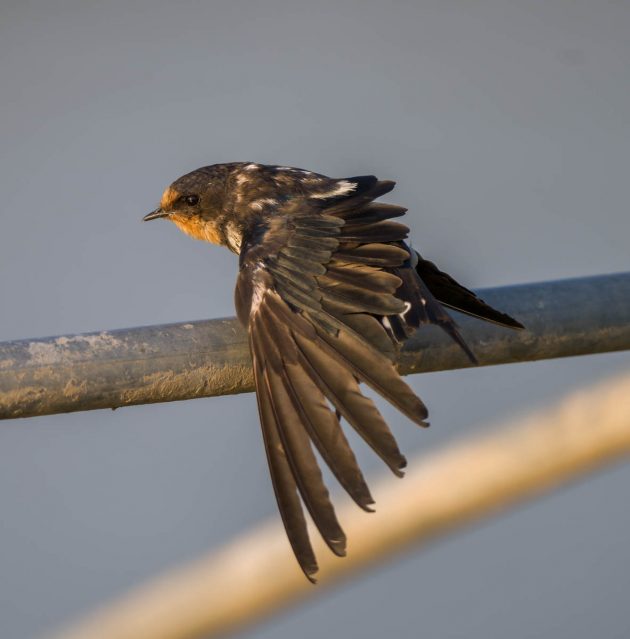
But looking rather good while doing that.
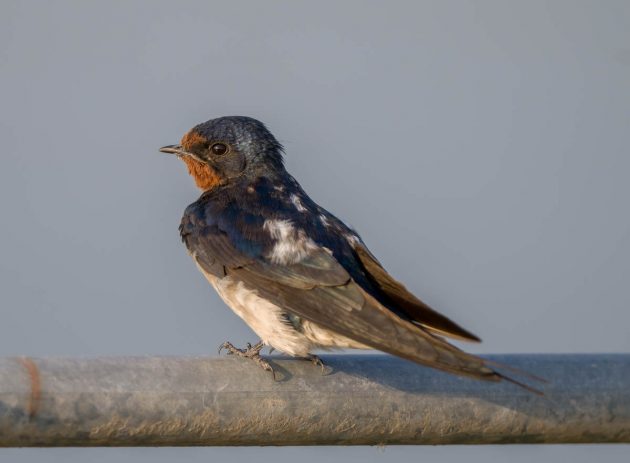
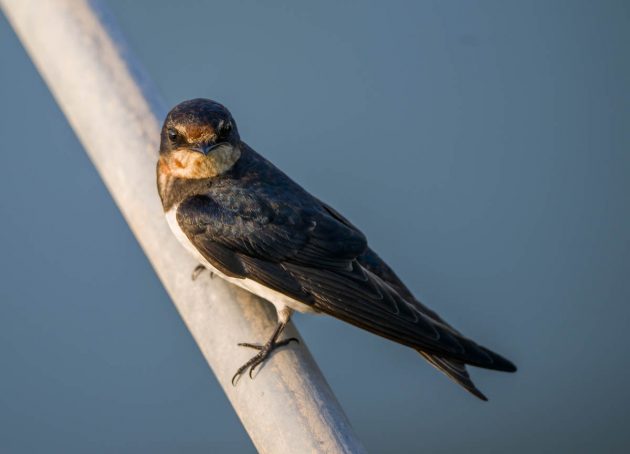
One seemed a bit concerned about the rickety construction it was sitting on.
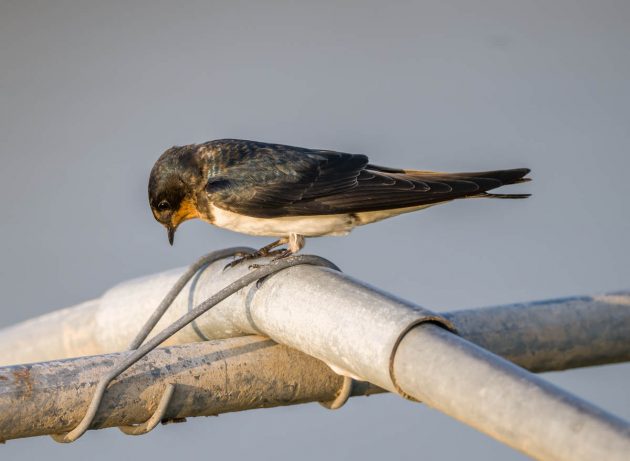
People like me – and there are probably not too many like me – have two things to look forward to for this September. One is the upcoming migration season – maybe the last one where there will still be birds at Nanhui. The other is the release of a new Titus Andronicus record. Aptly (given the situation at Nanhui) it is titled “(I’m) Screwed”.











An amazing riff.
There’s nothing pretentious about appreciating the beauty of a grebe!
Thanks, Mike!